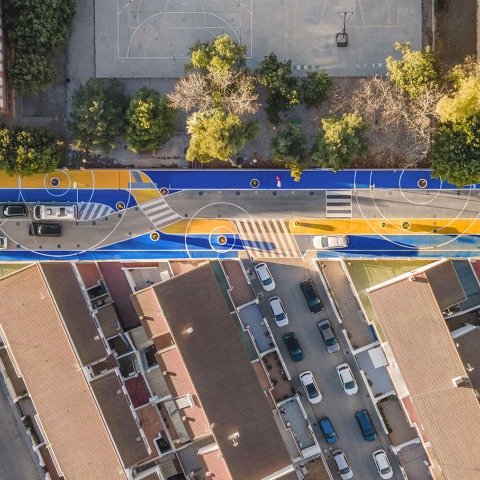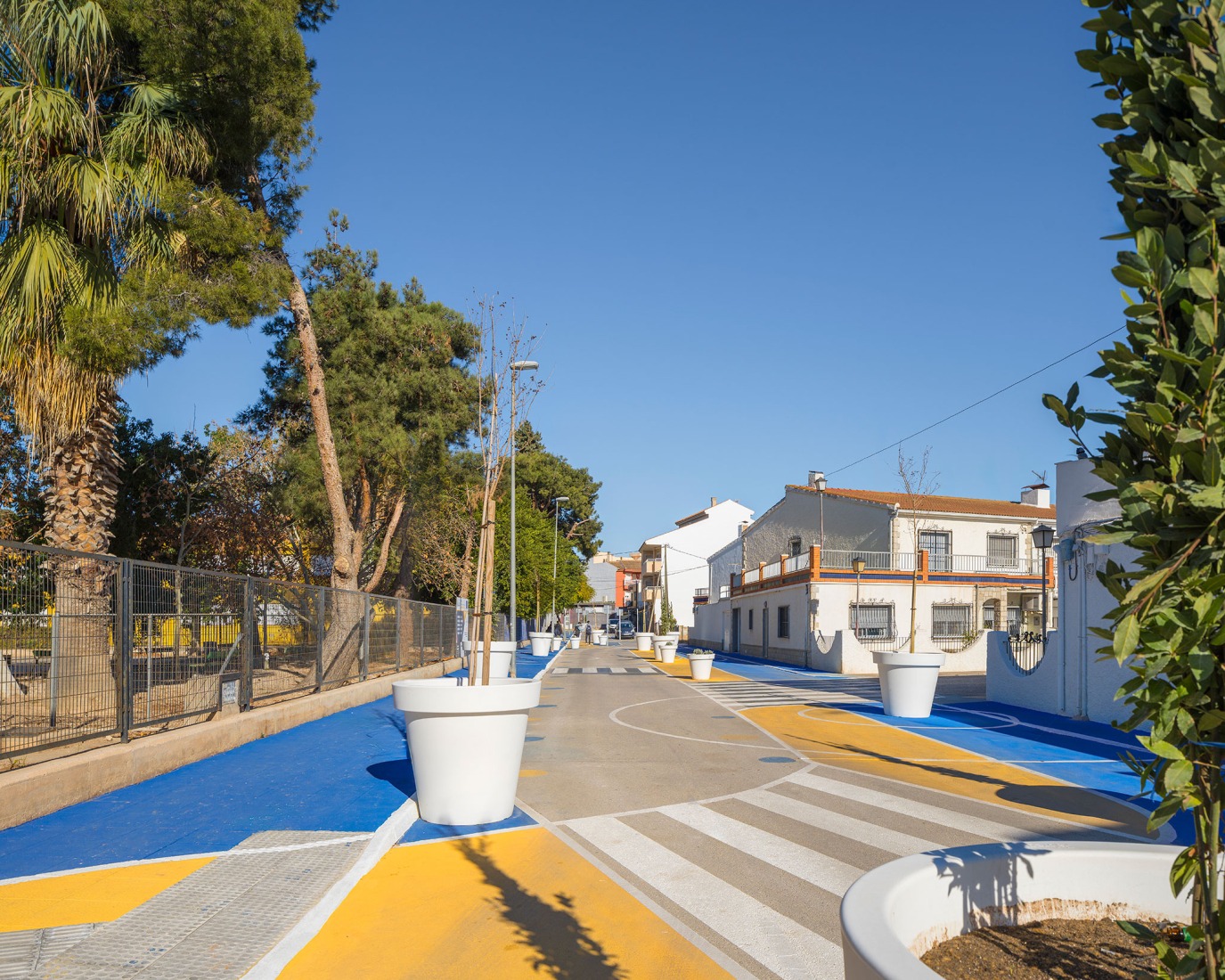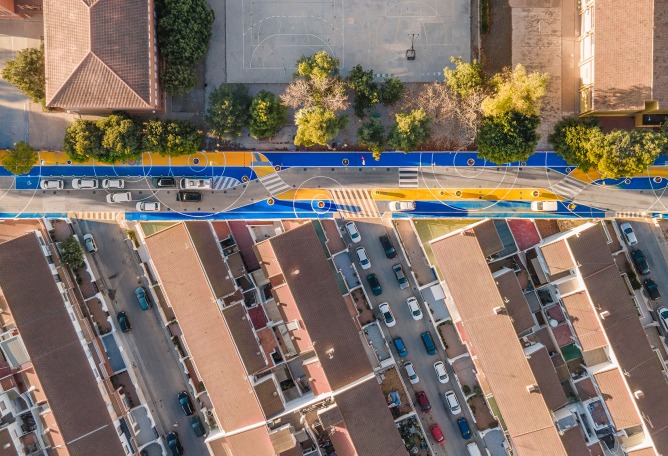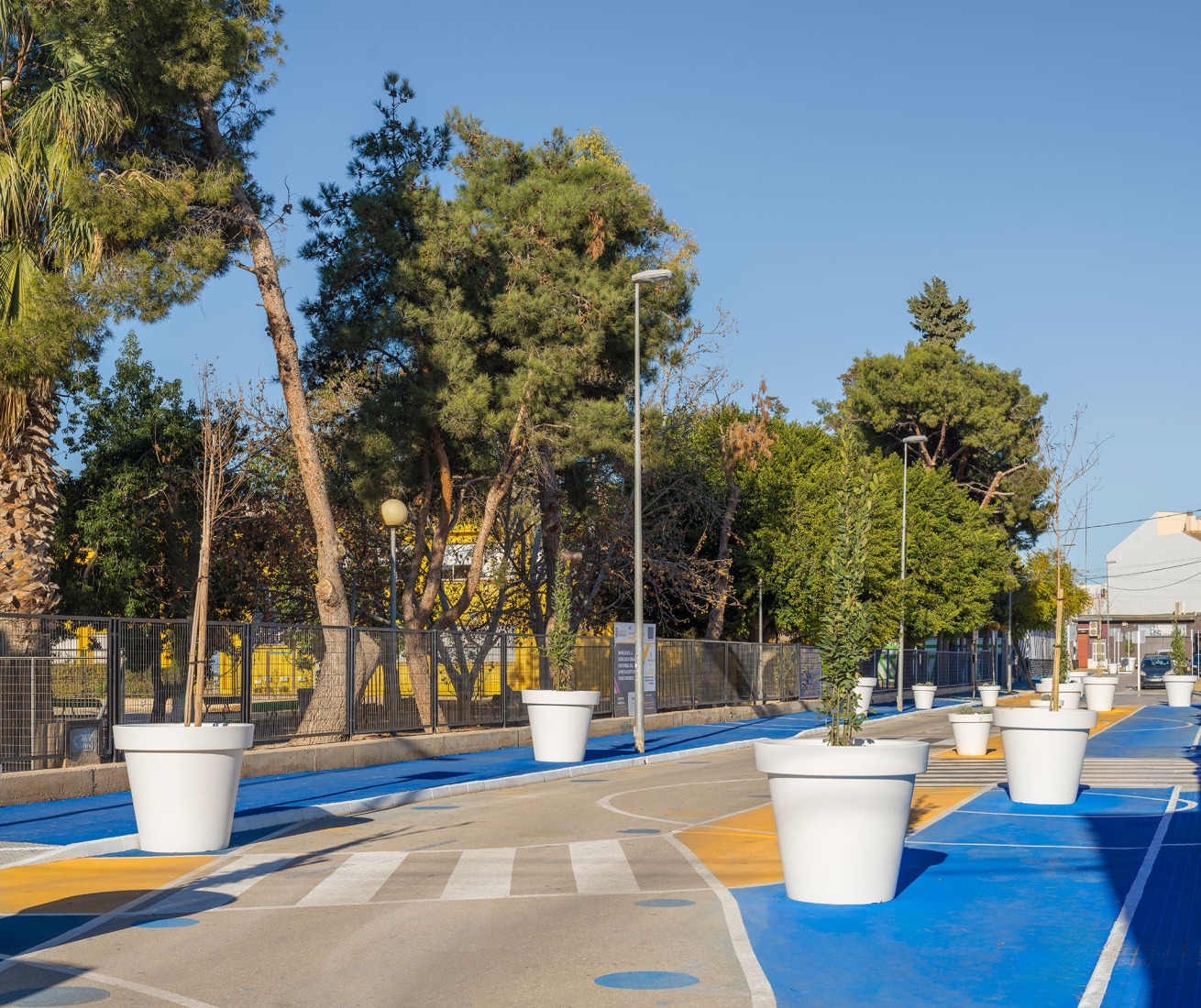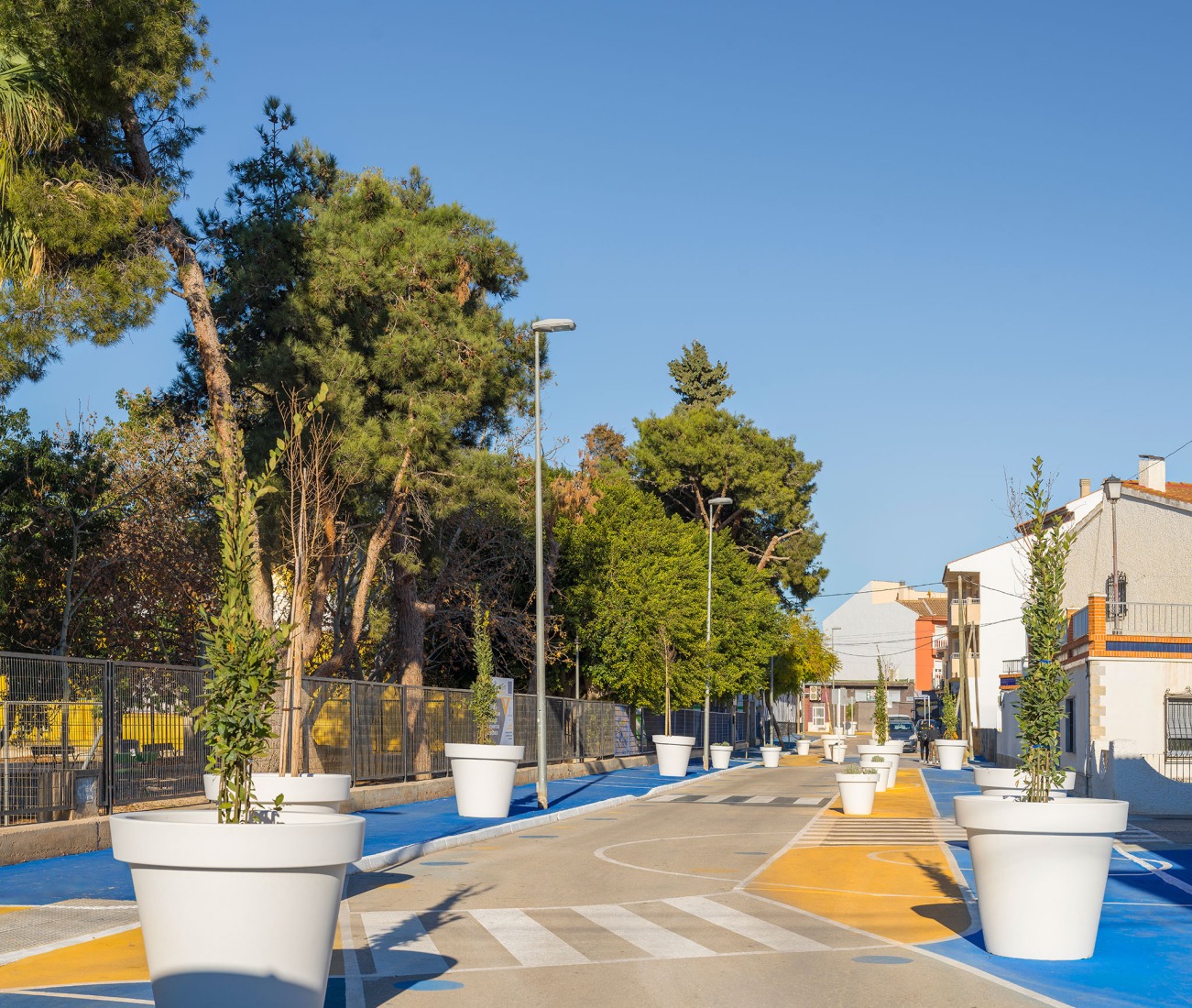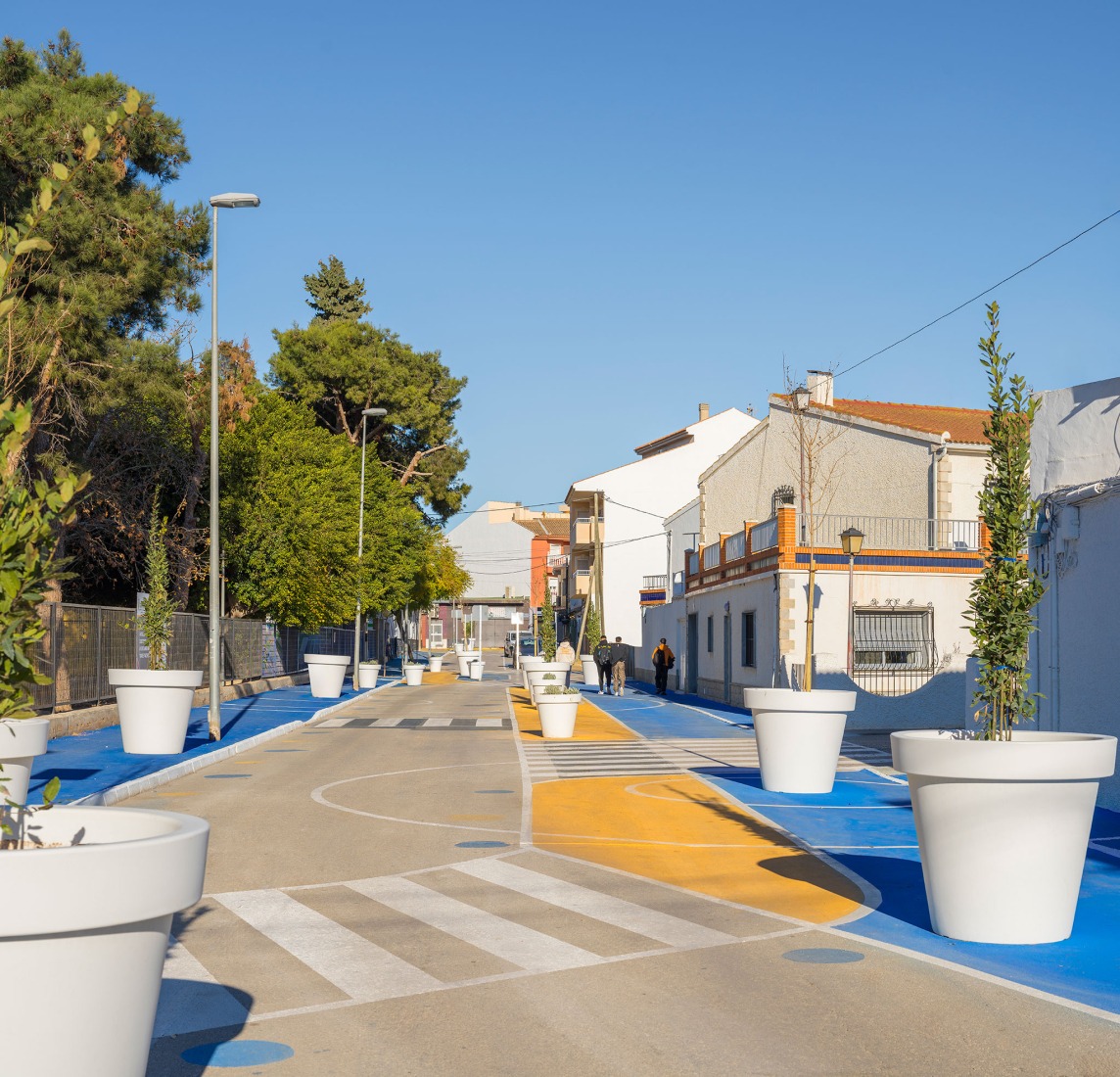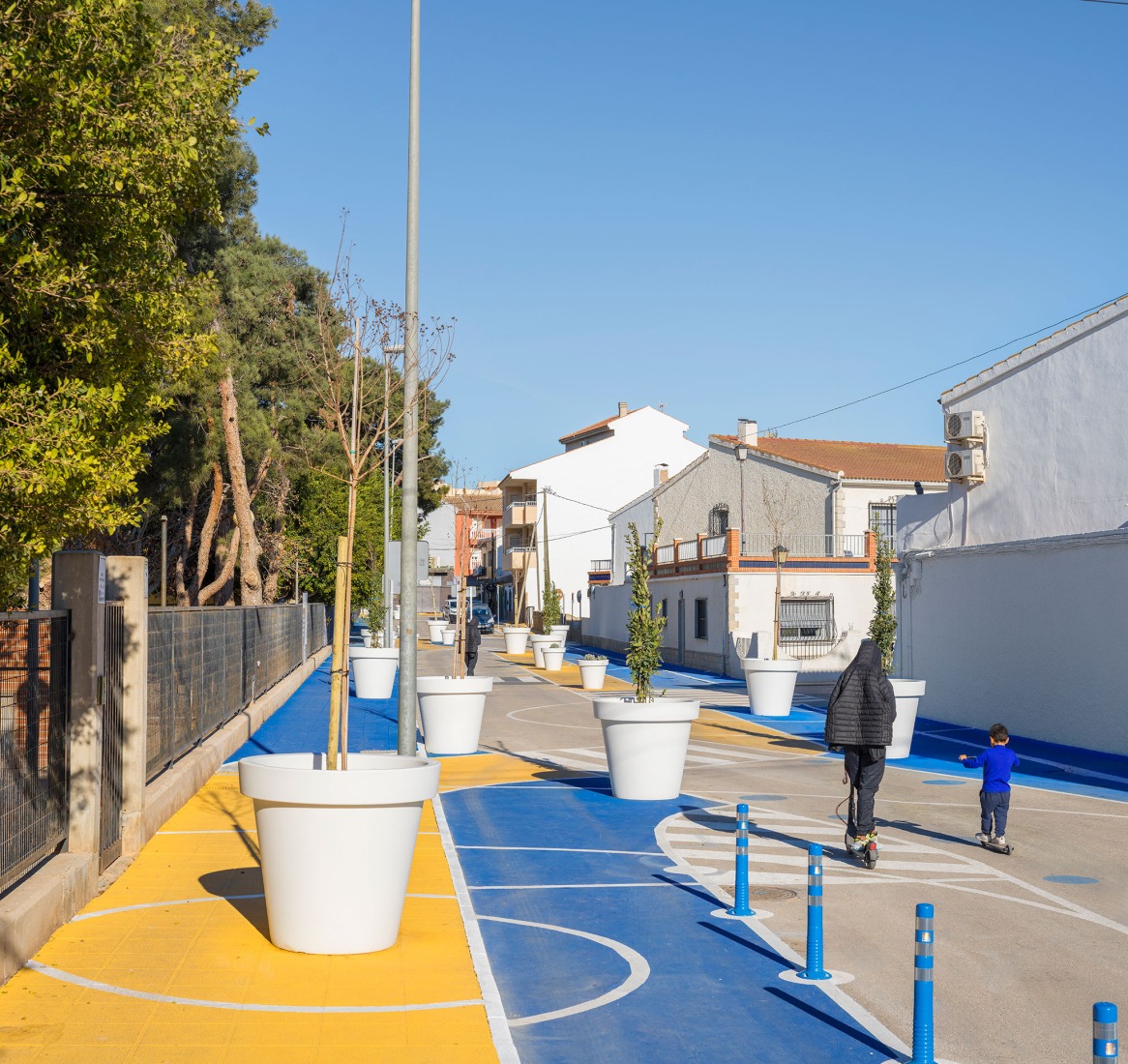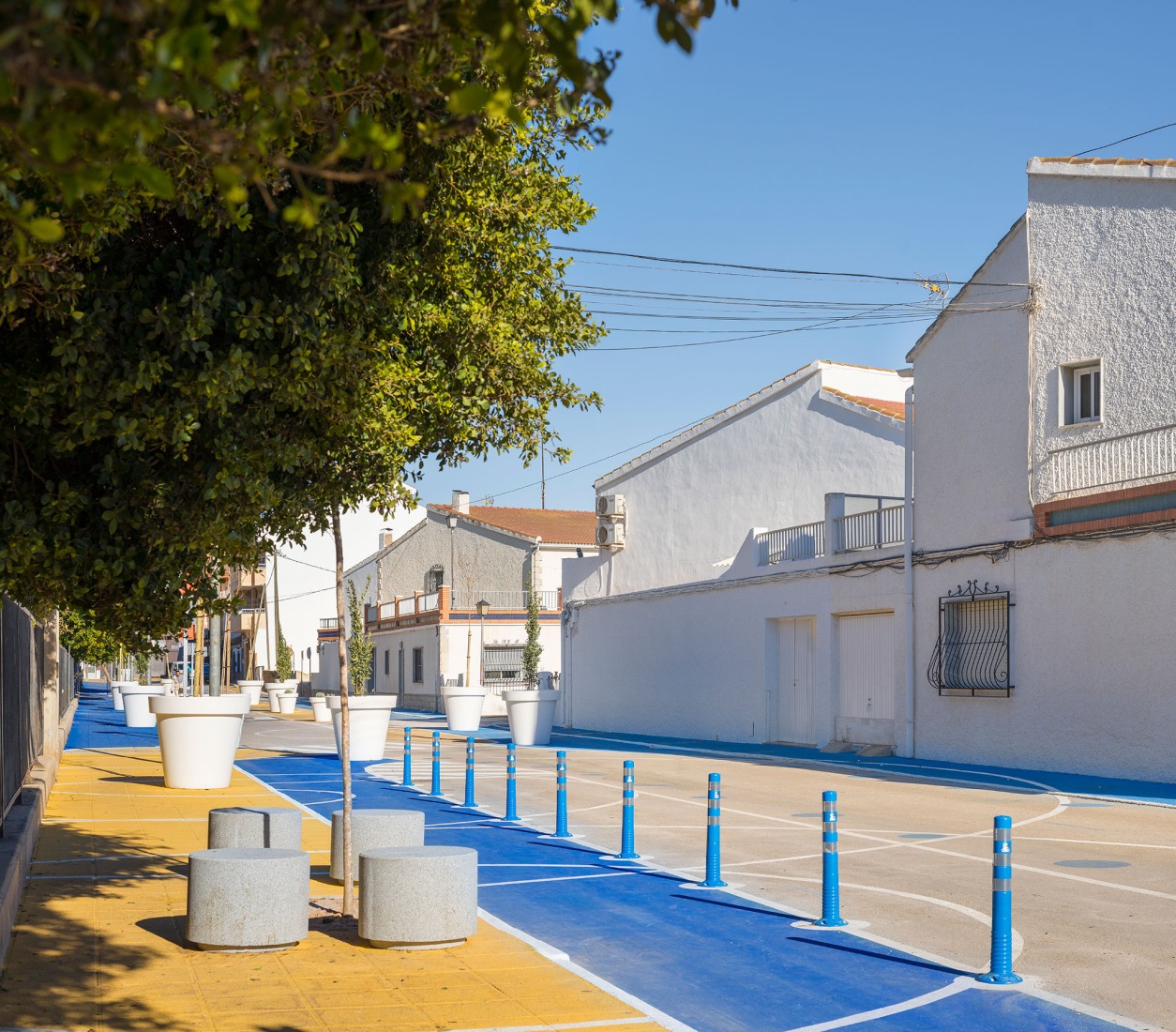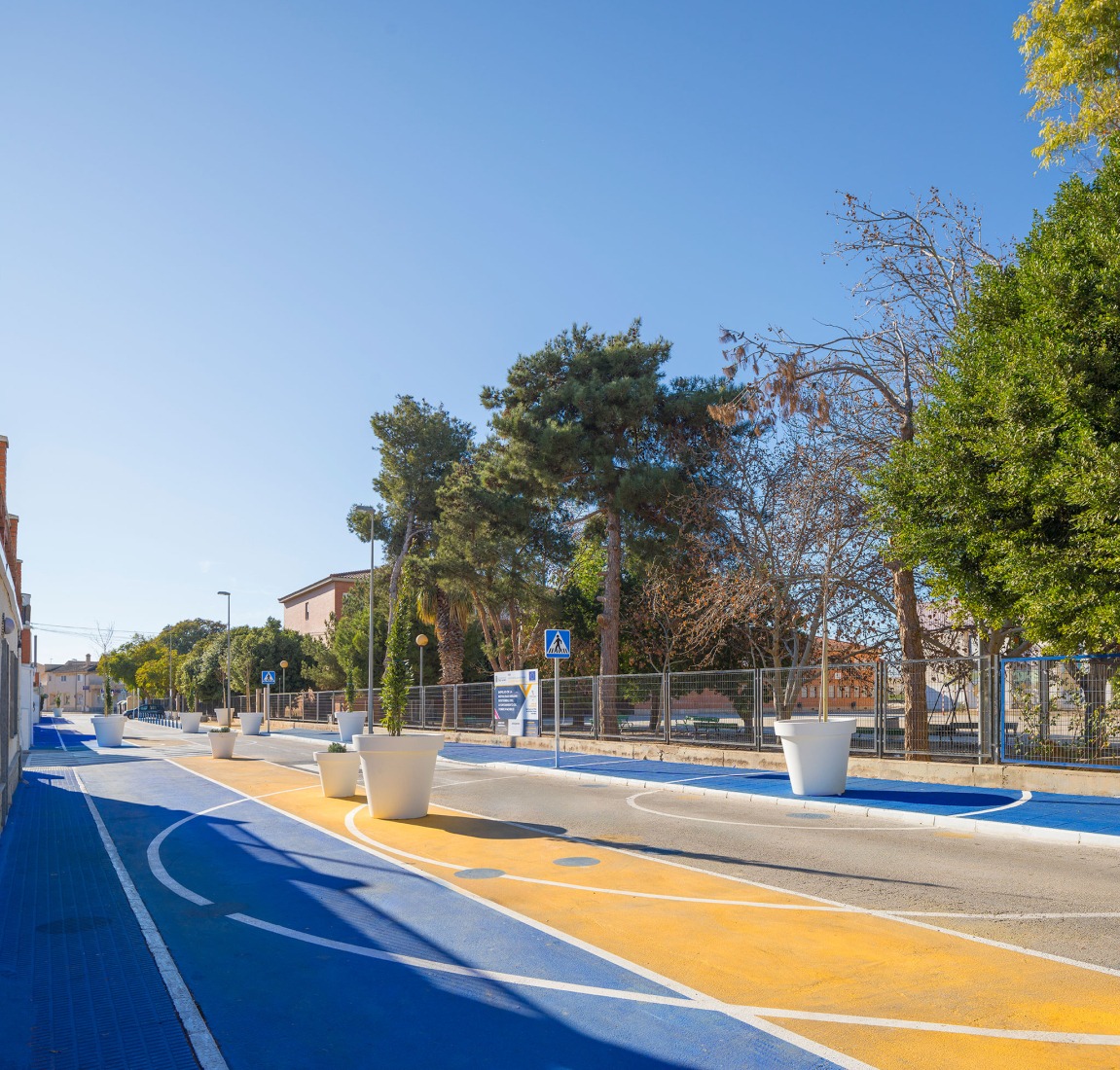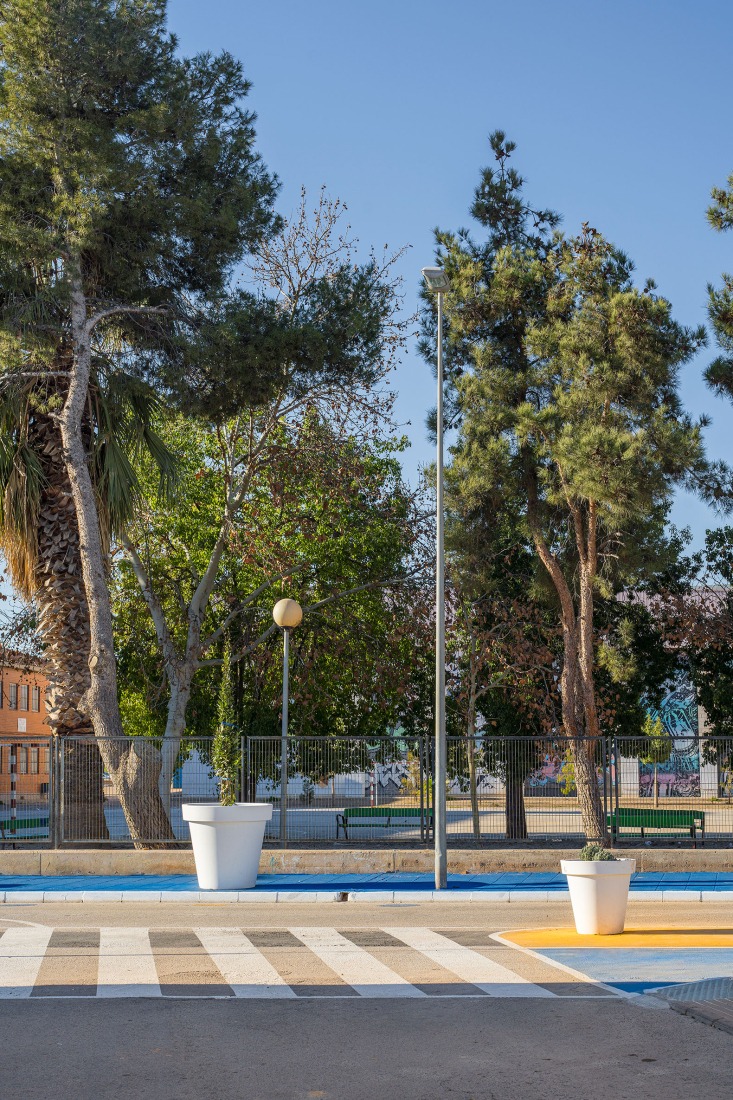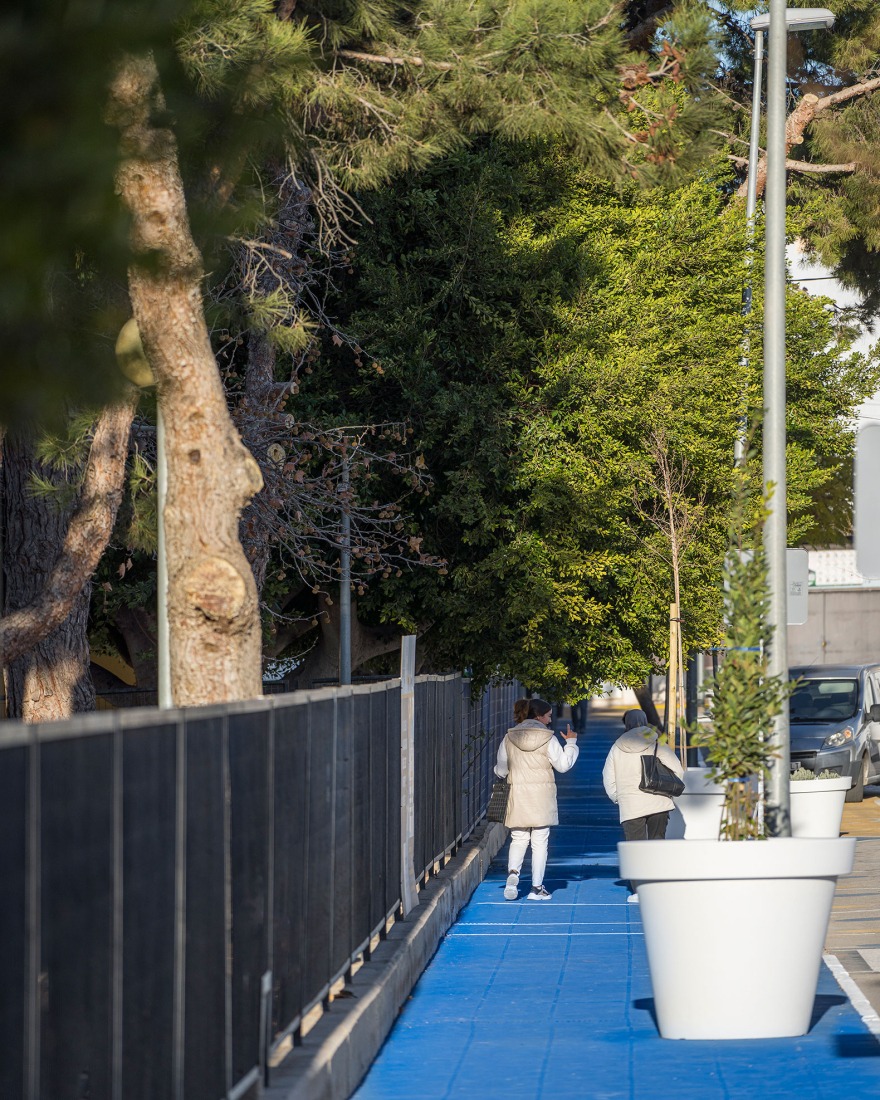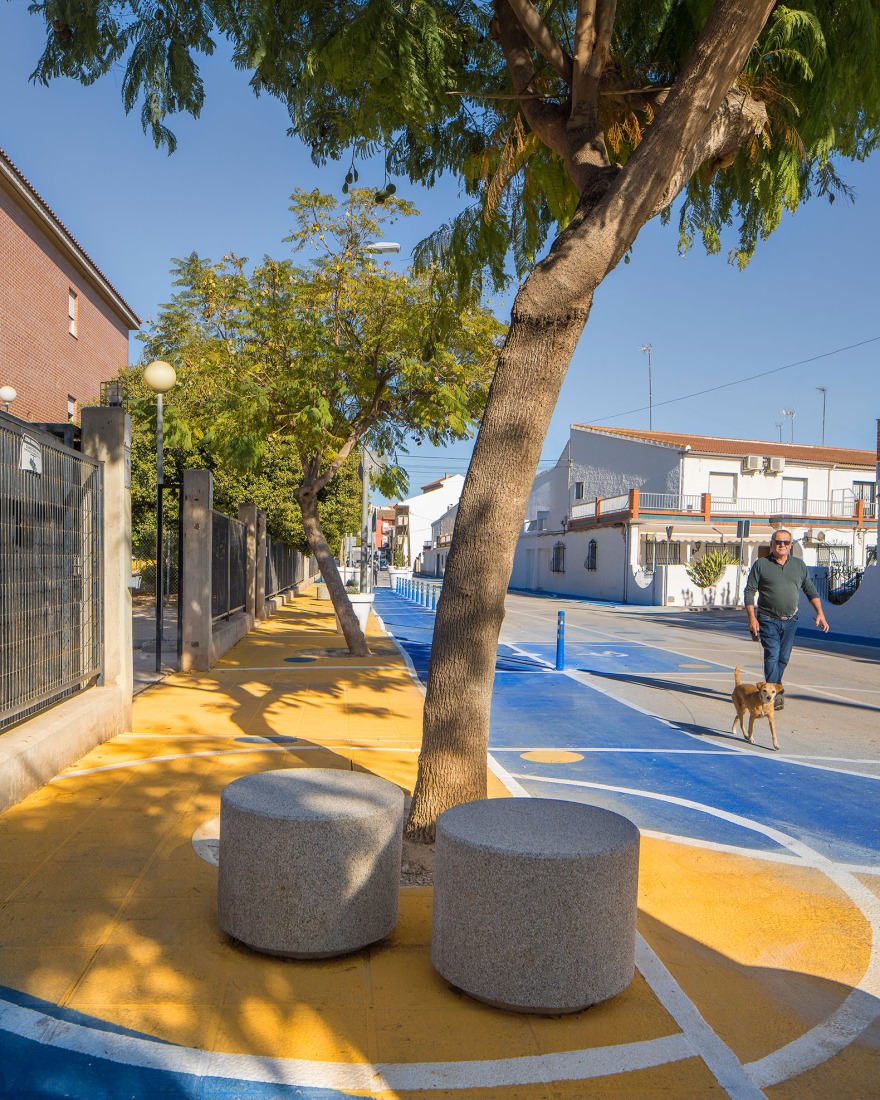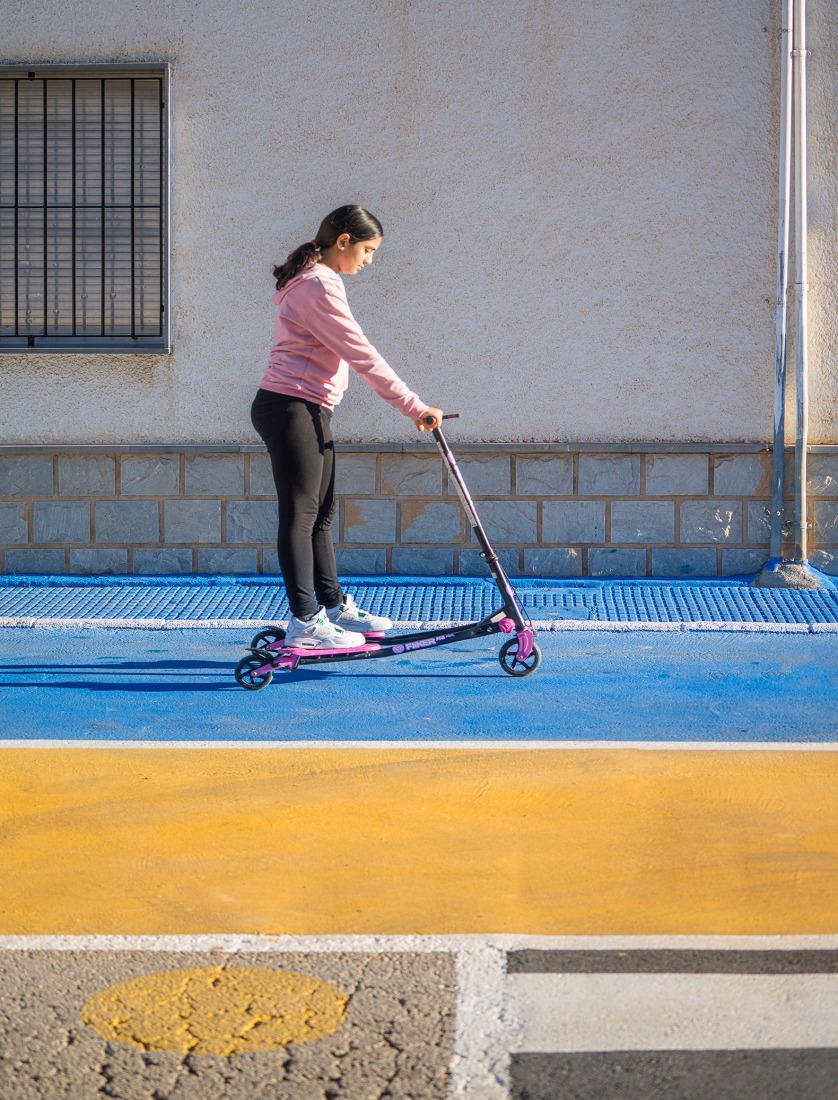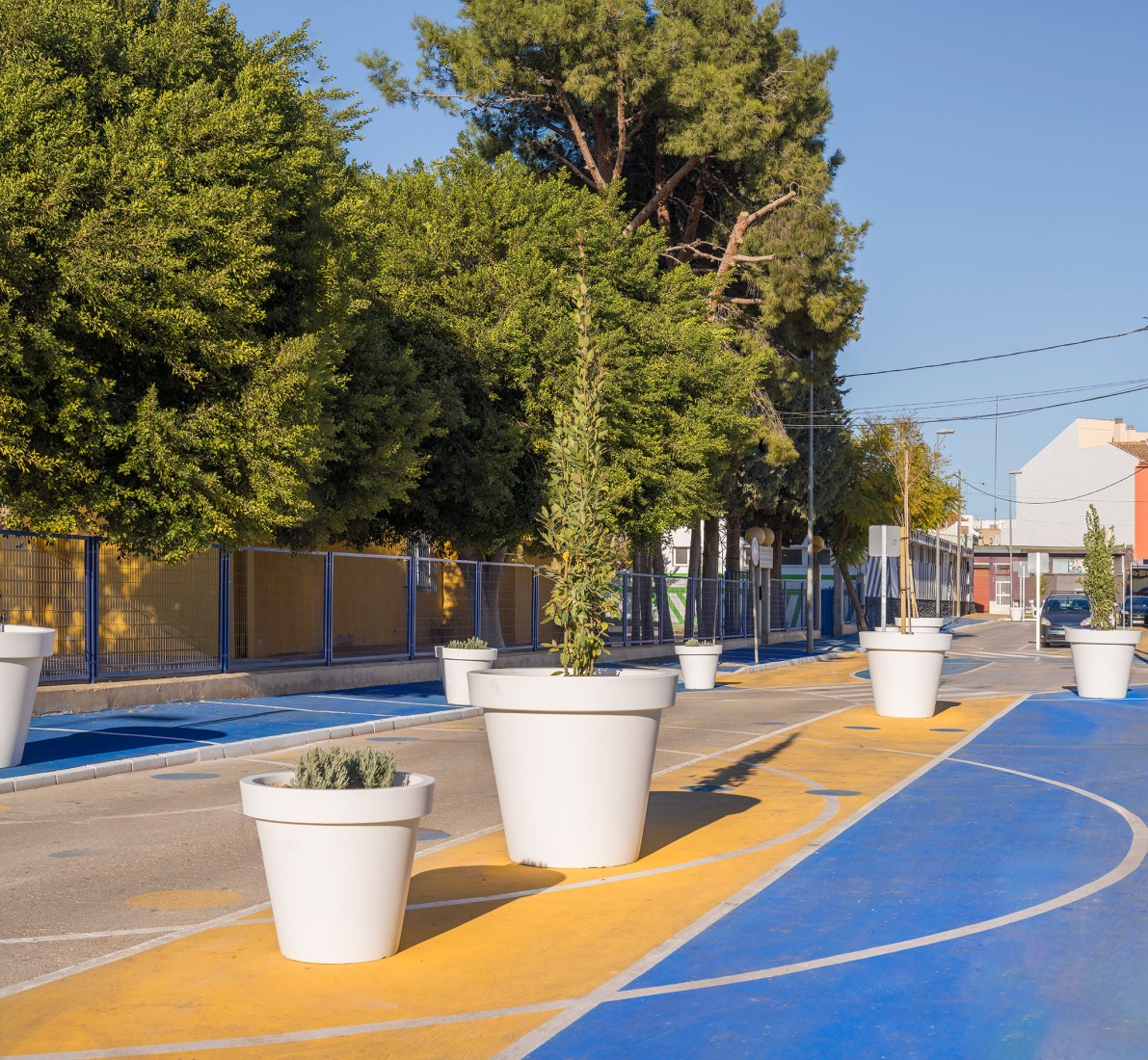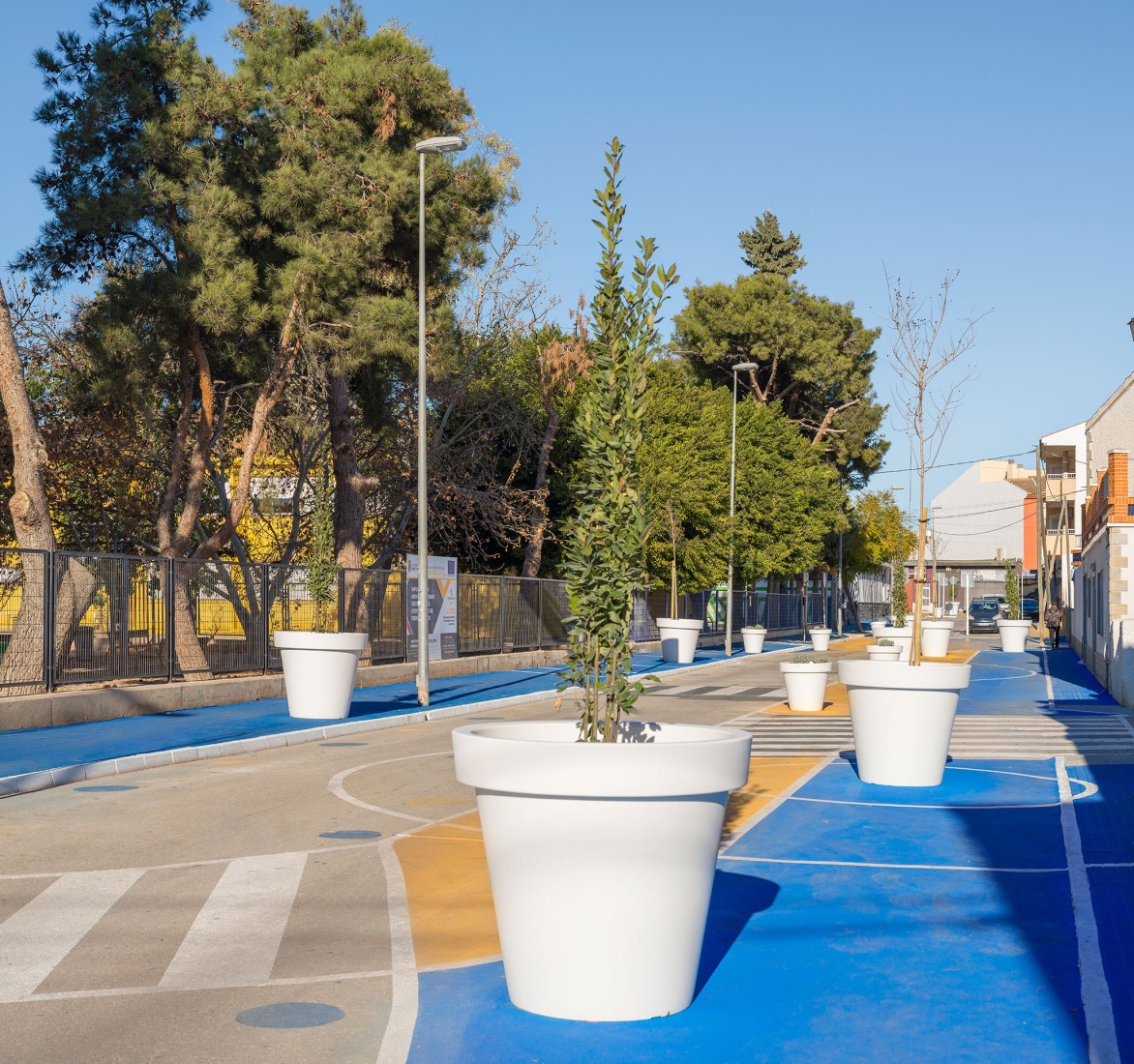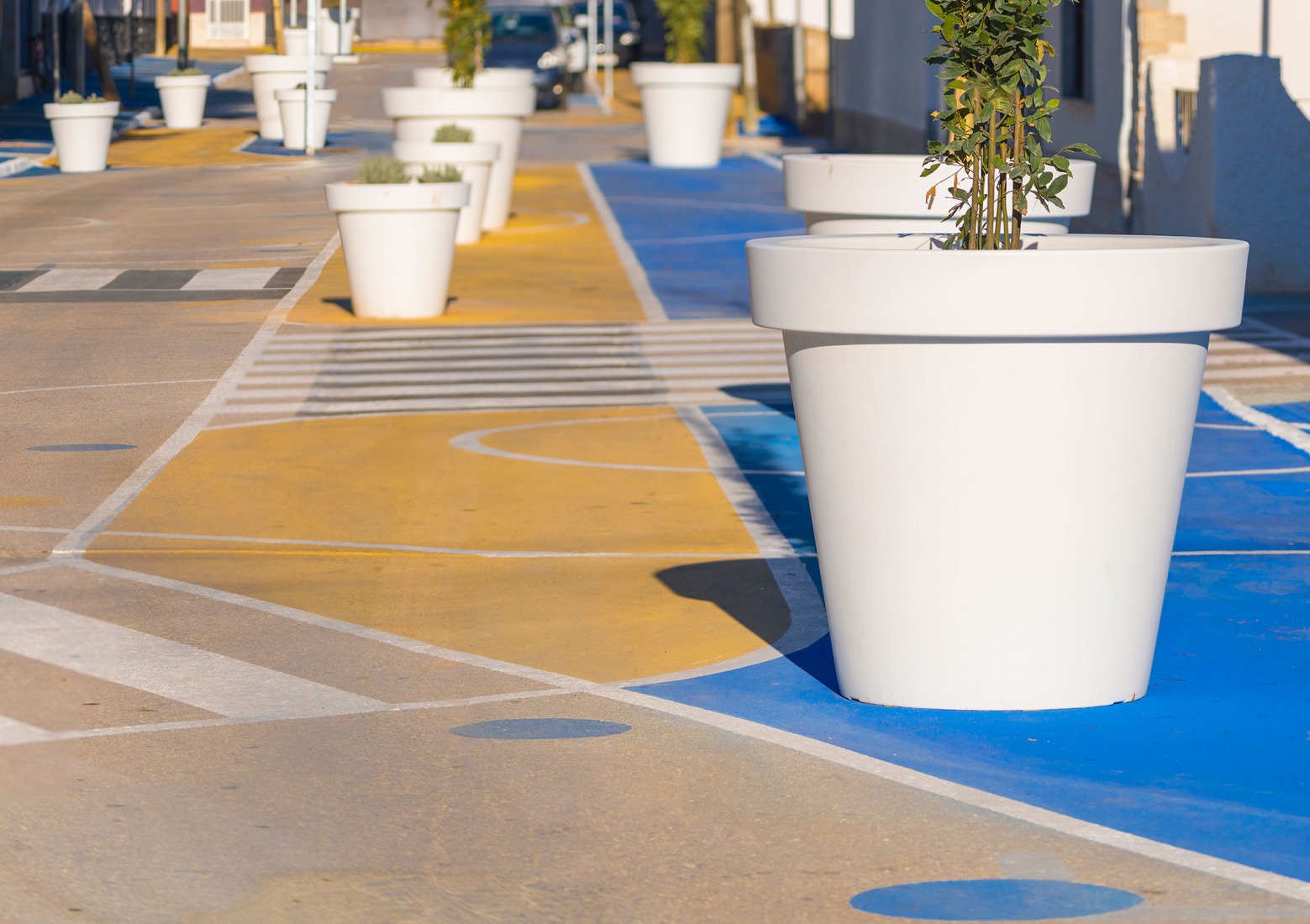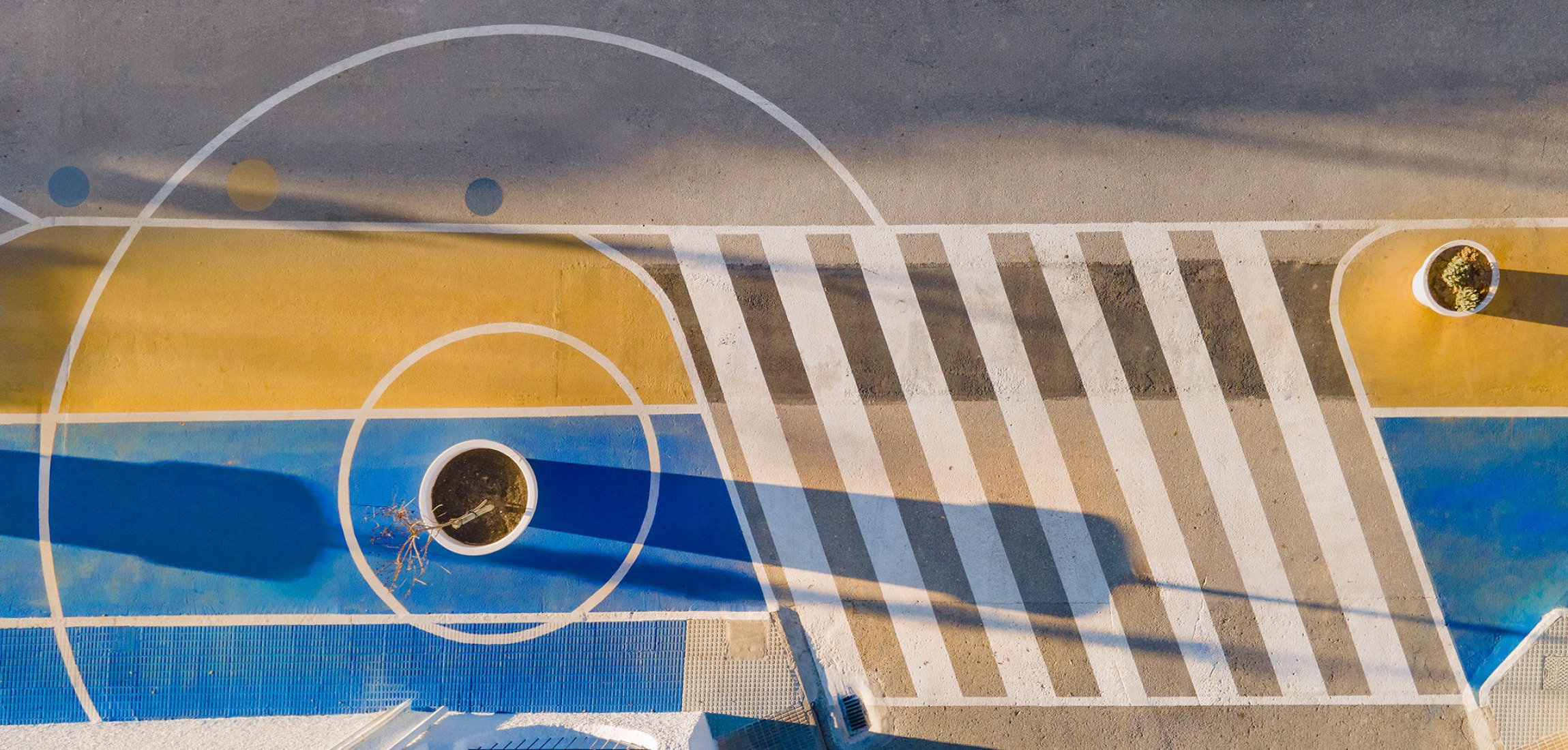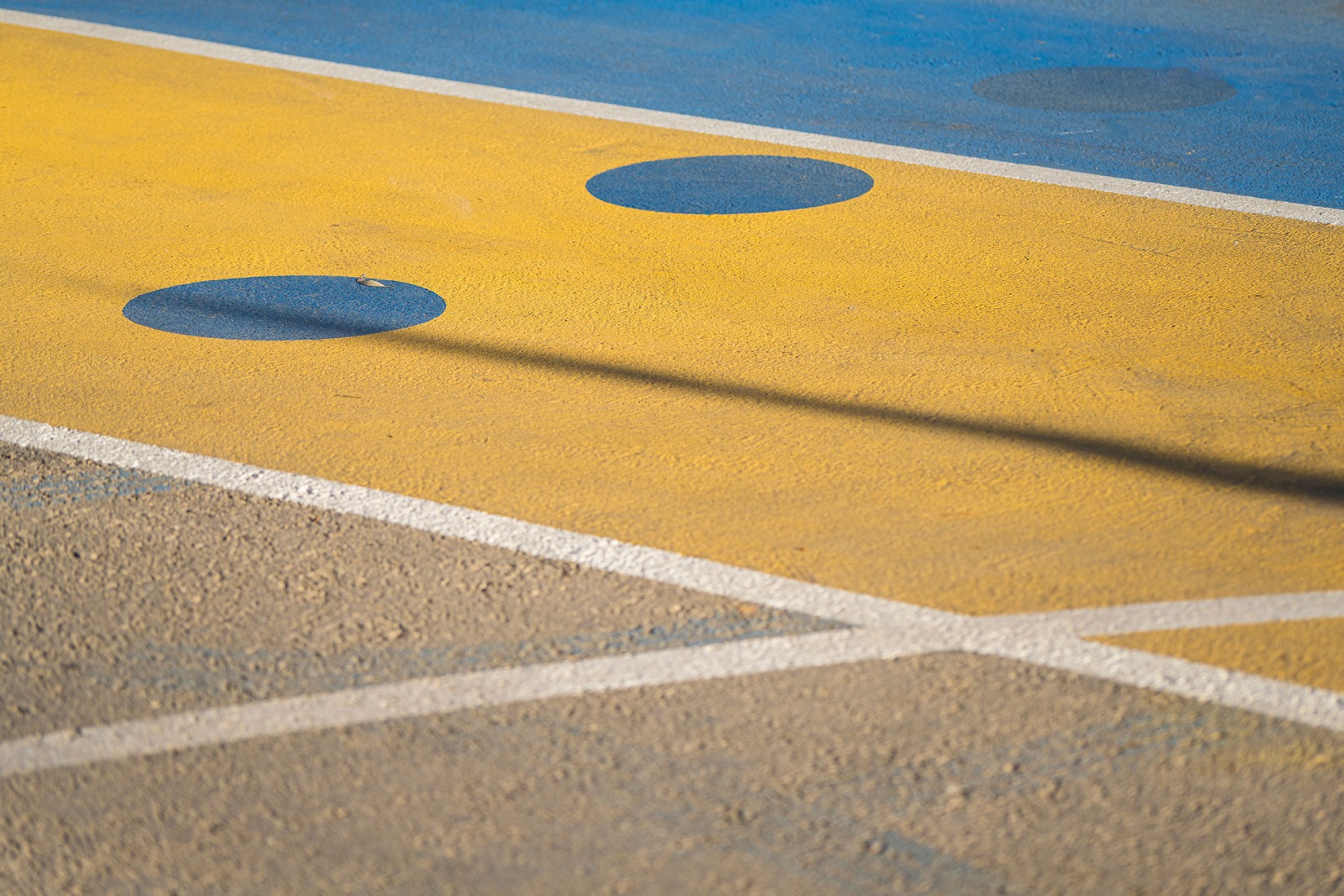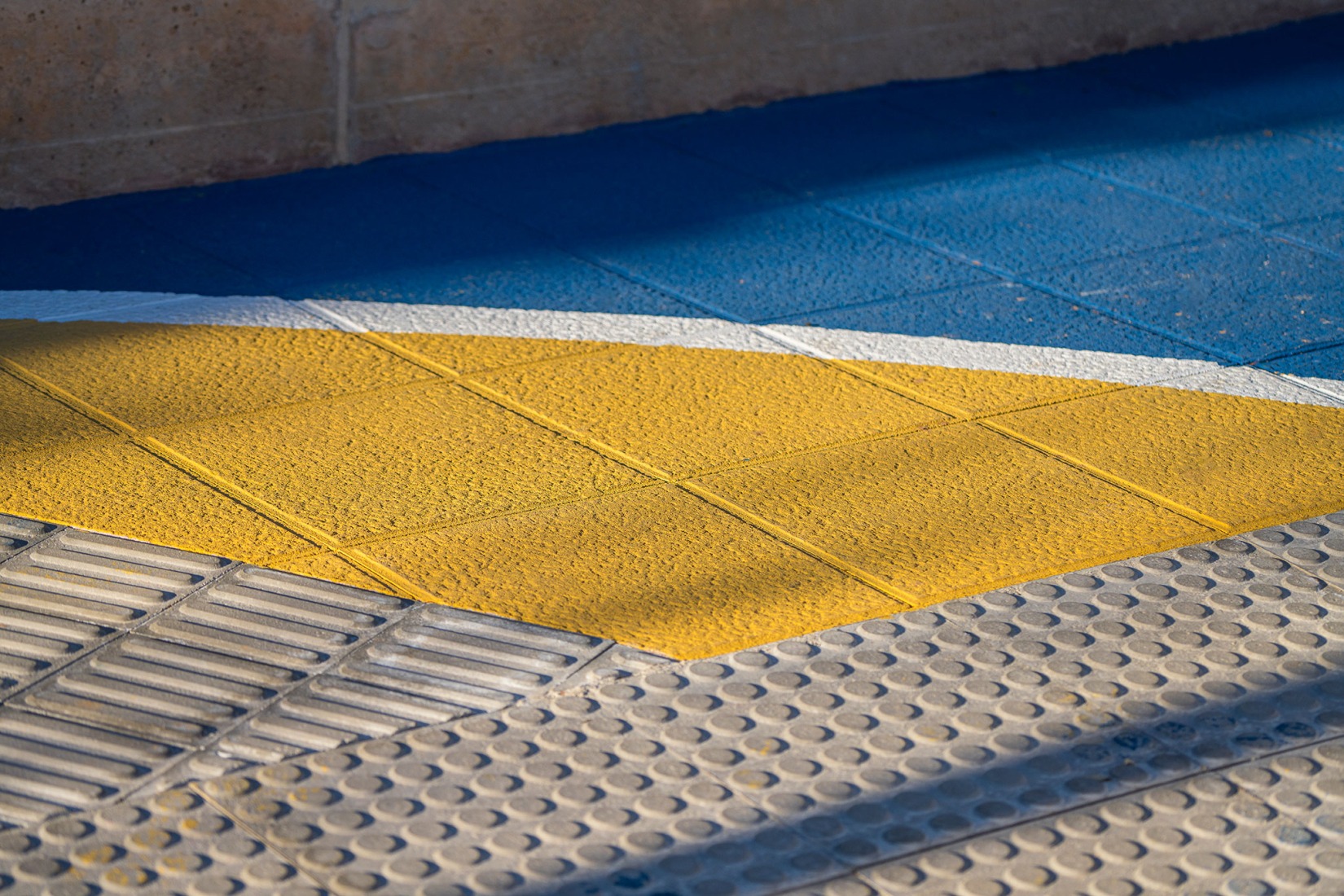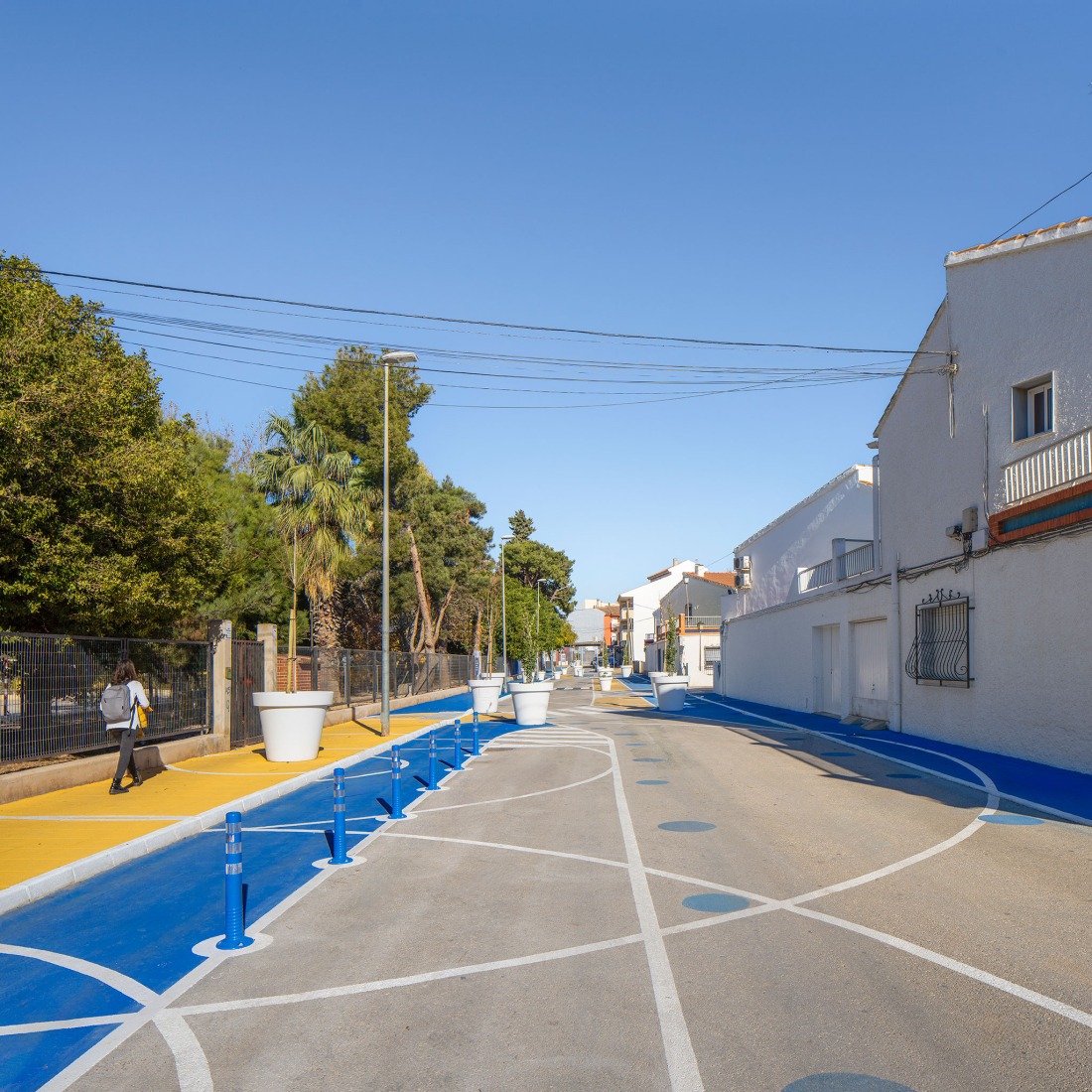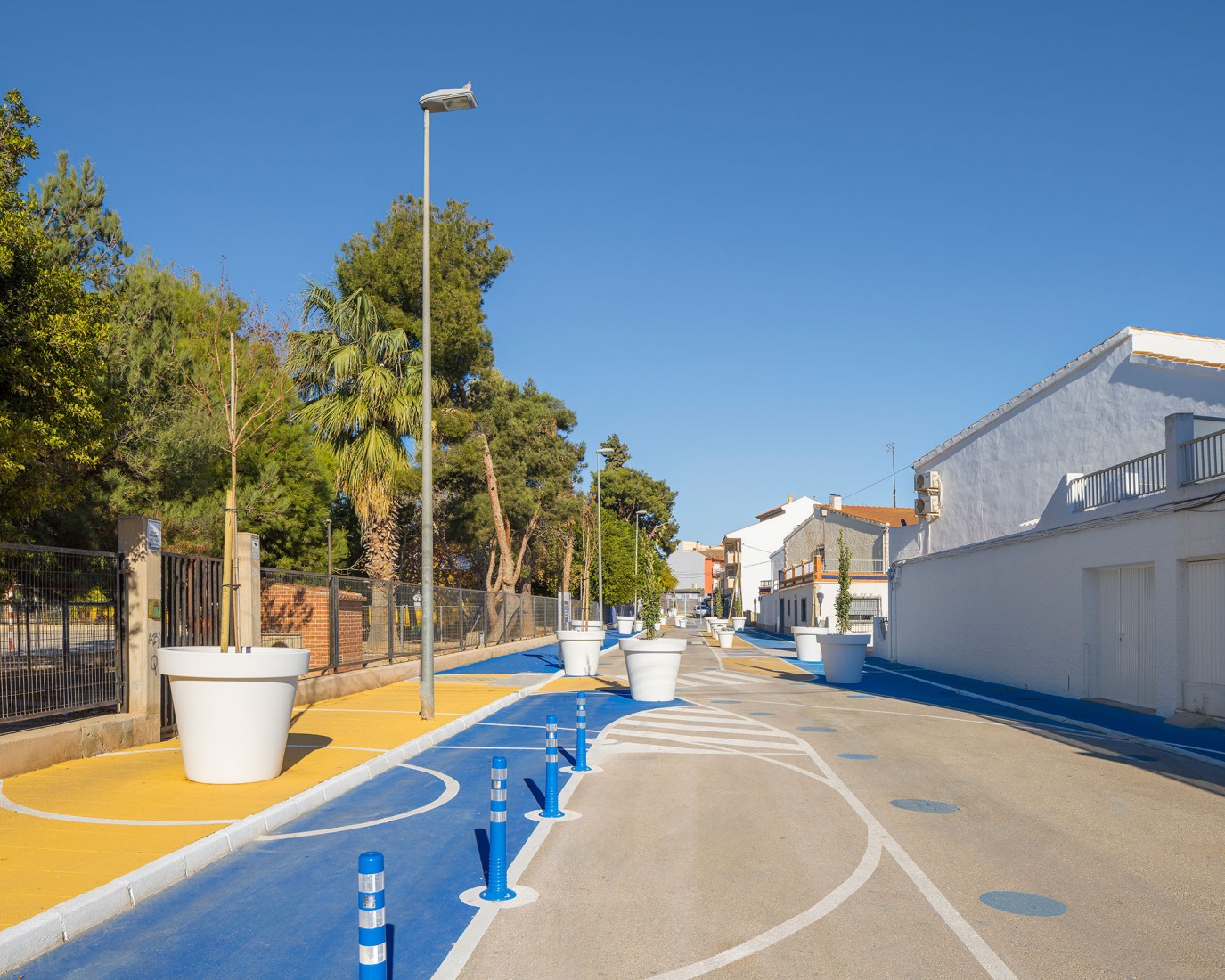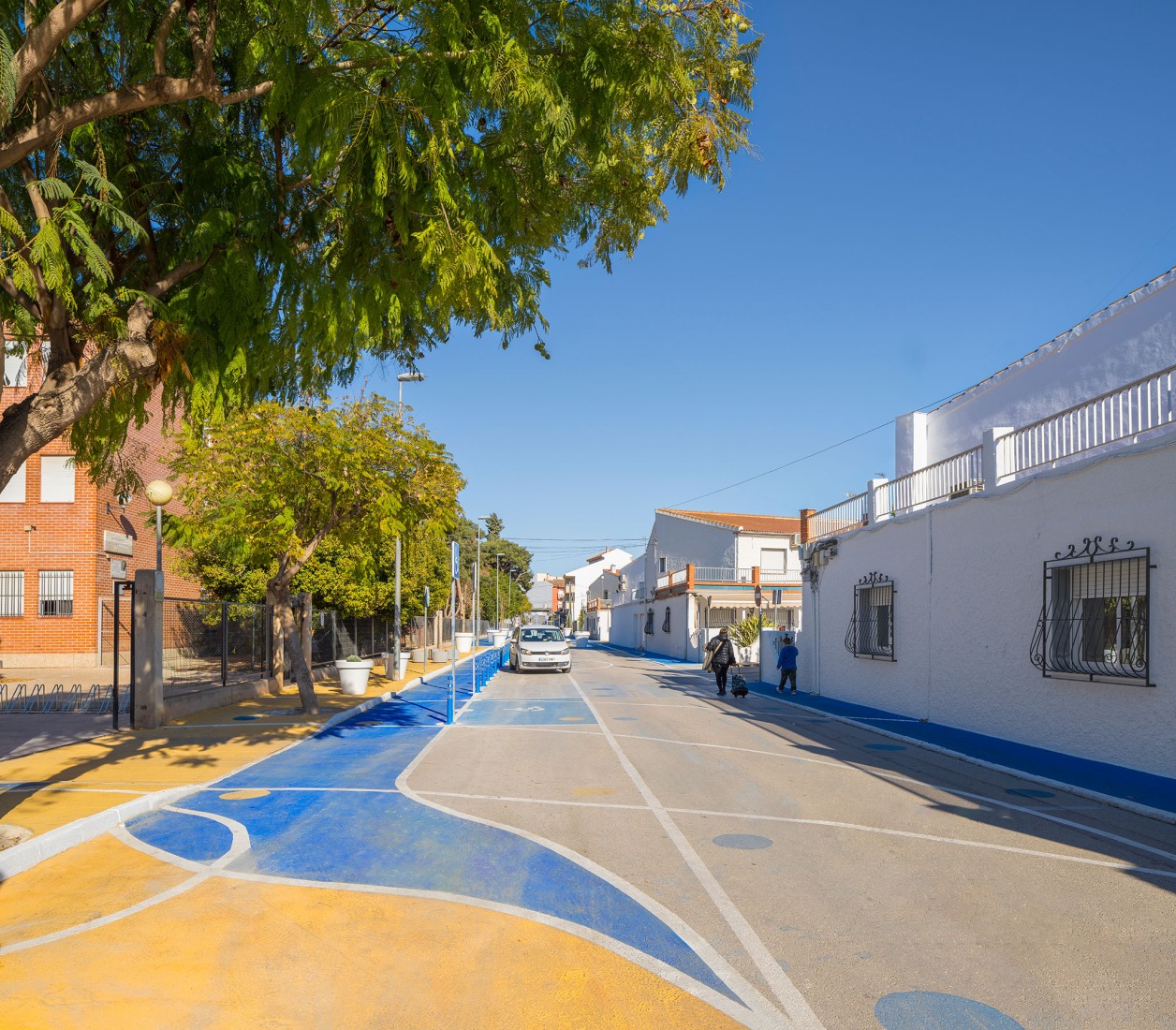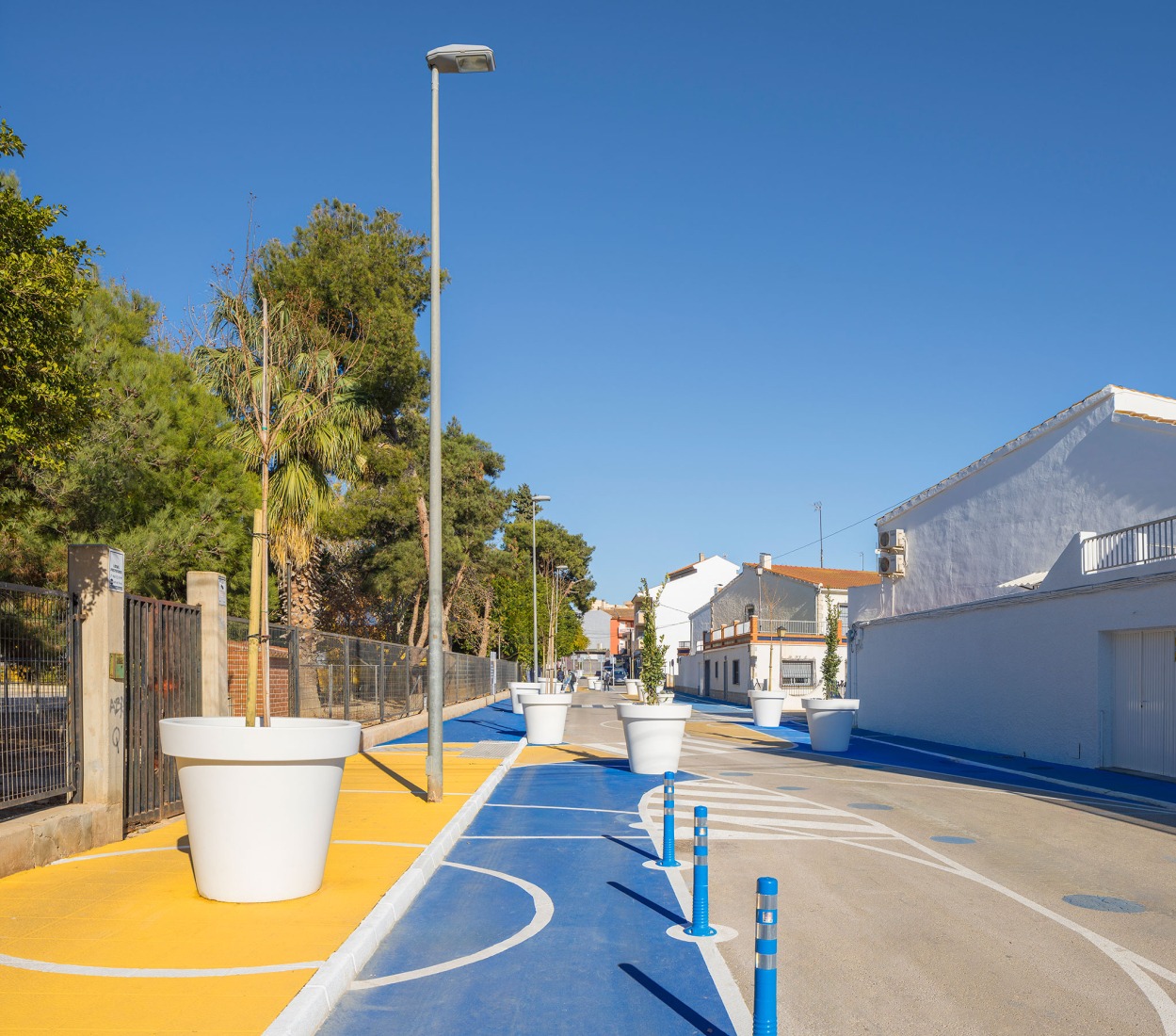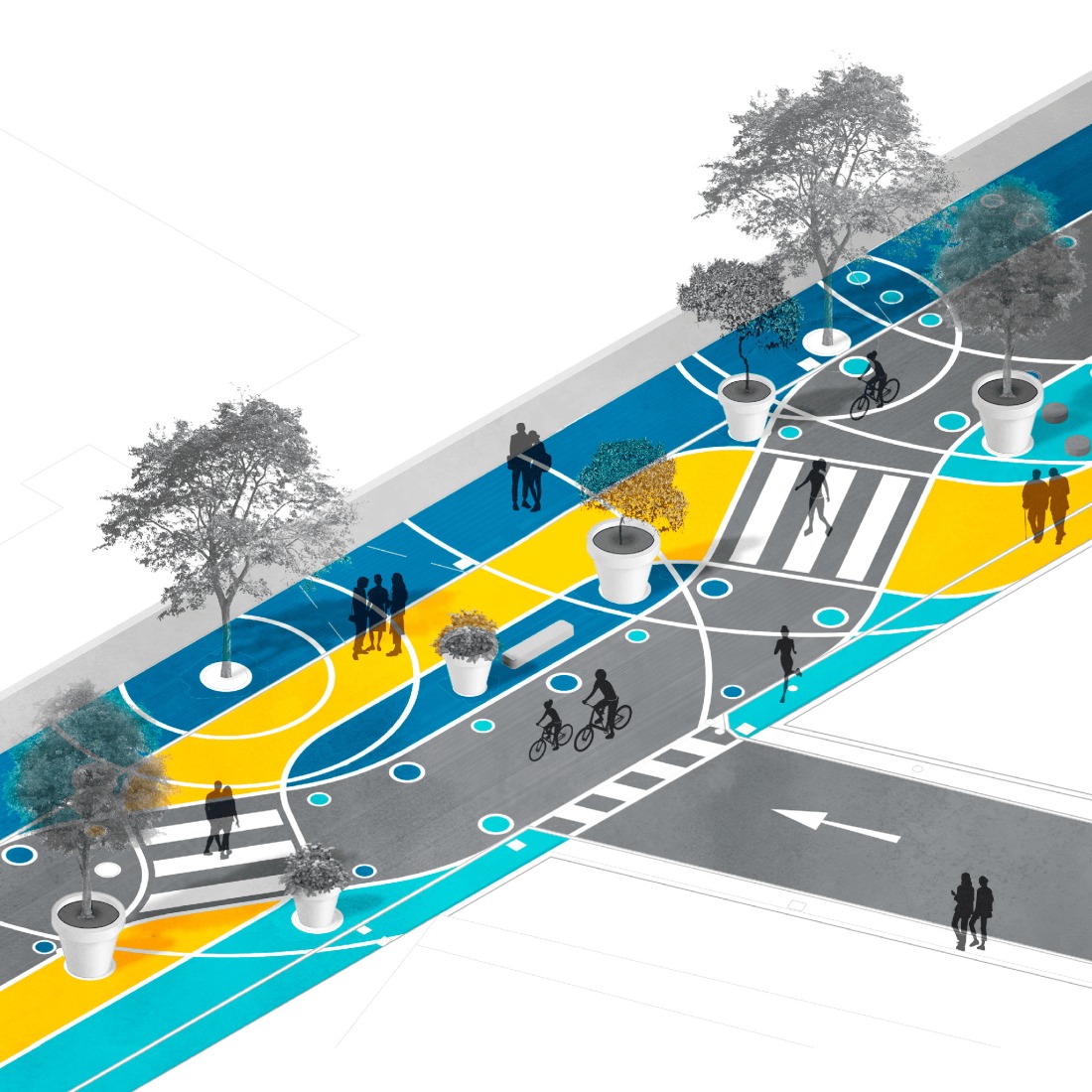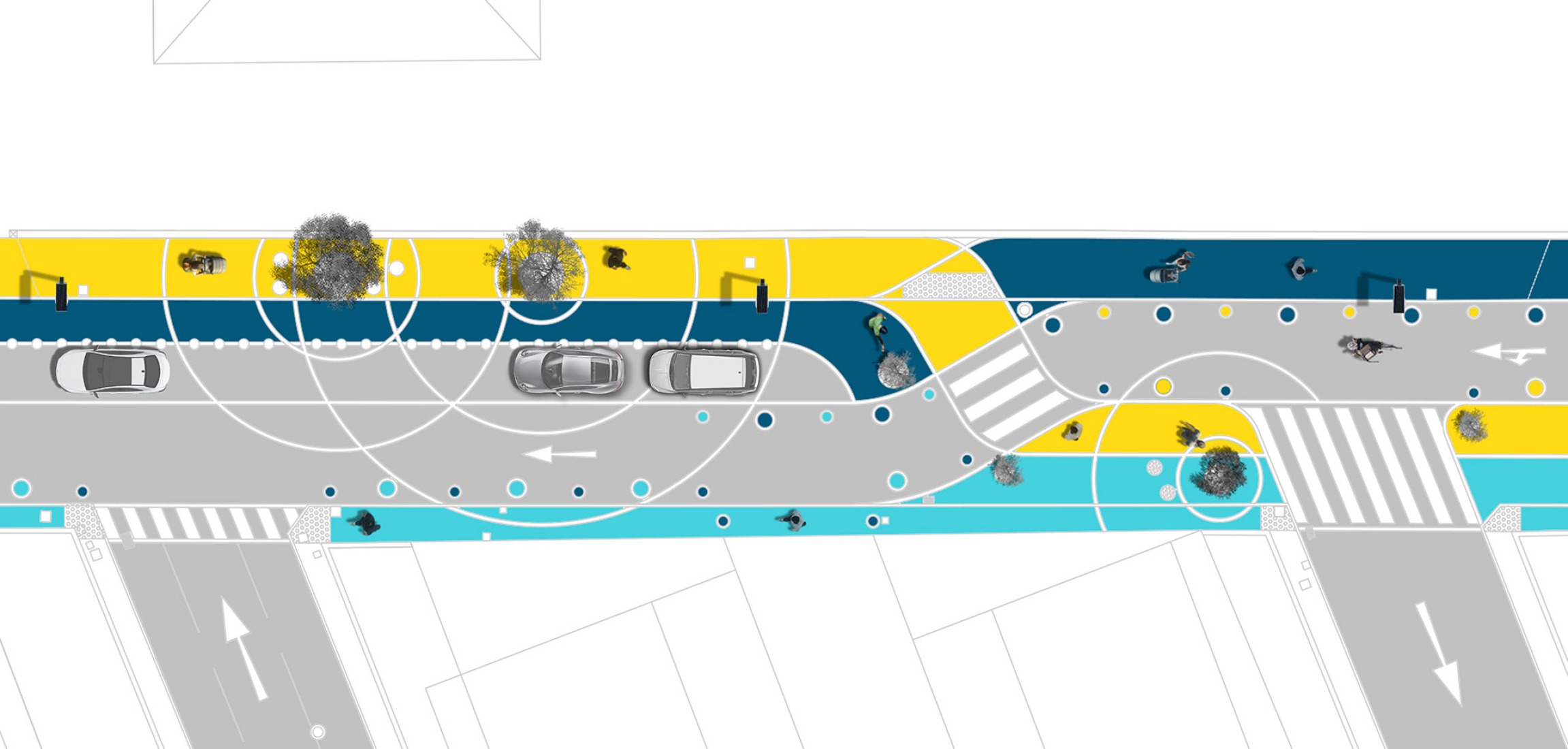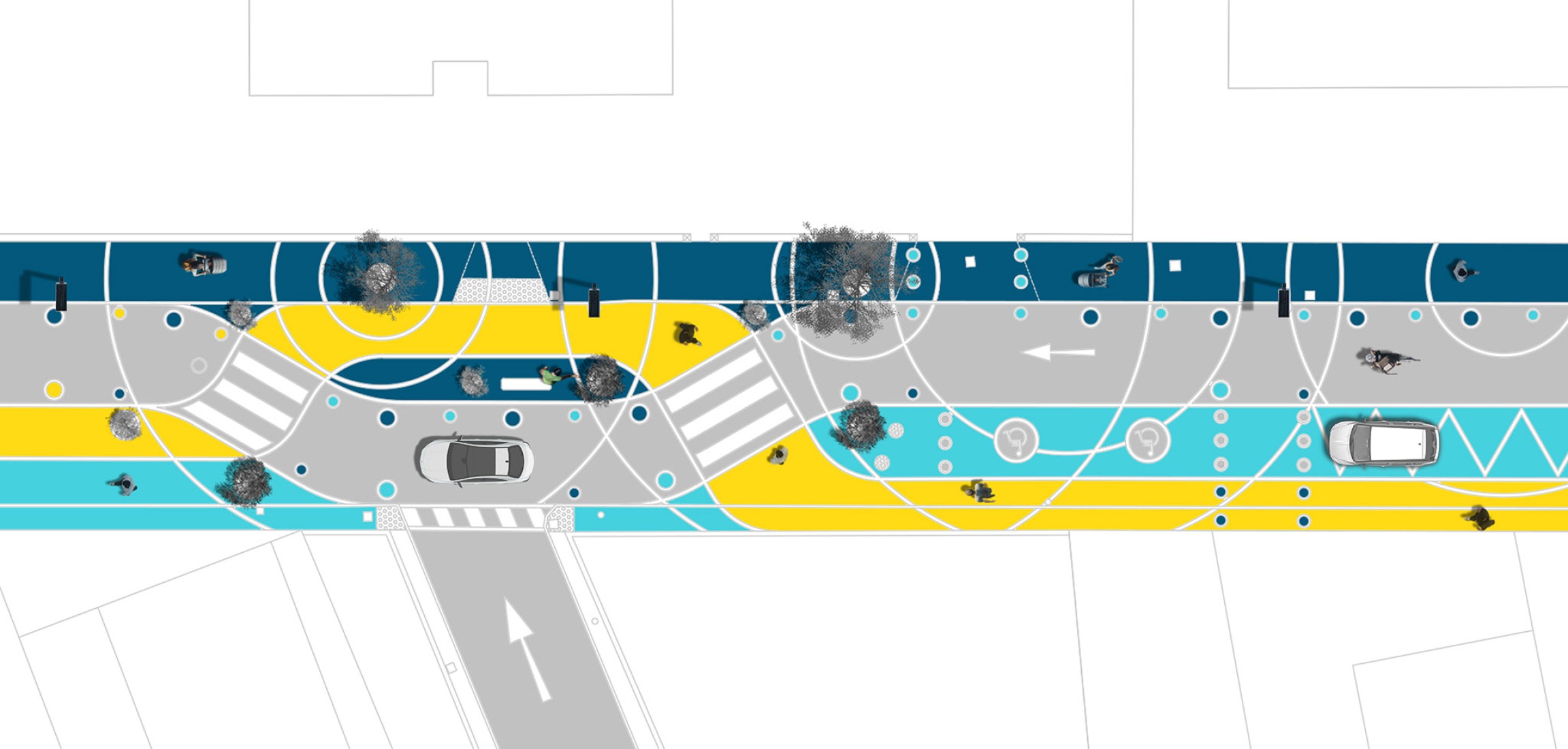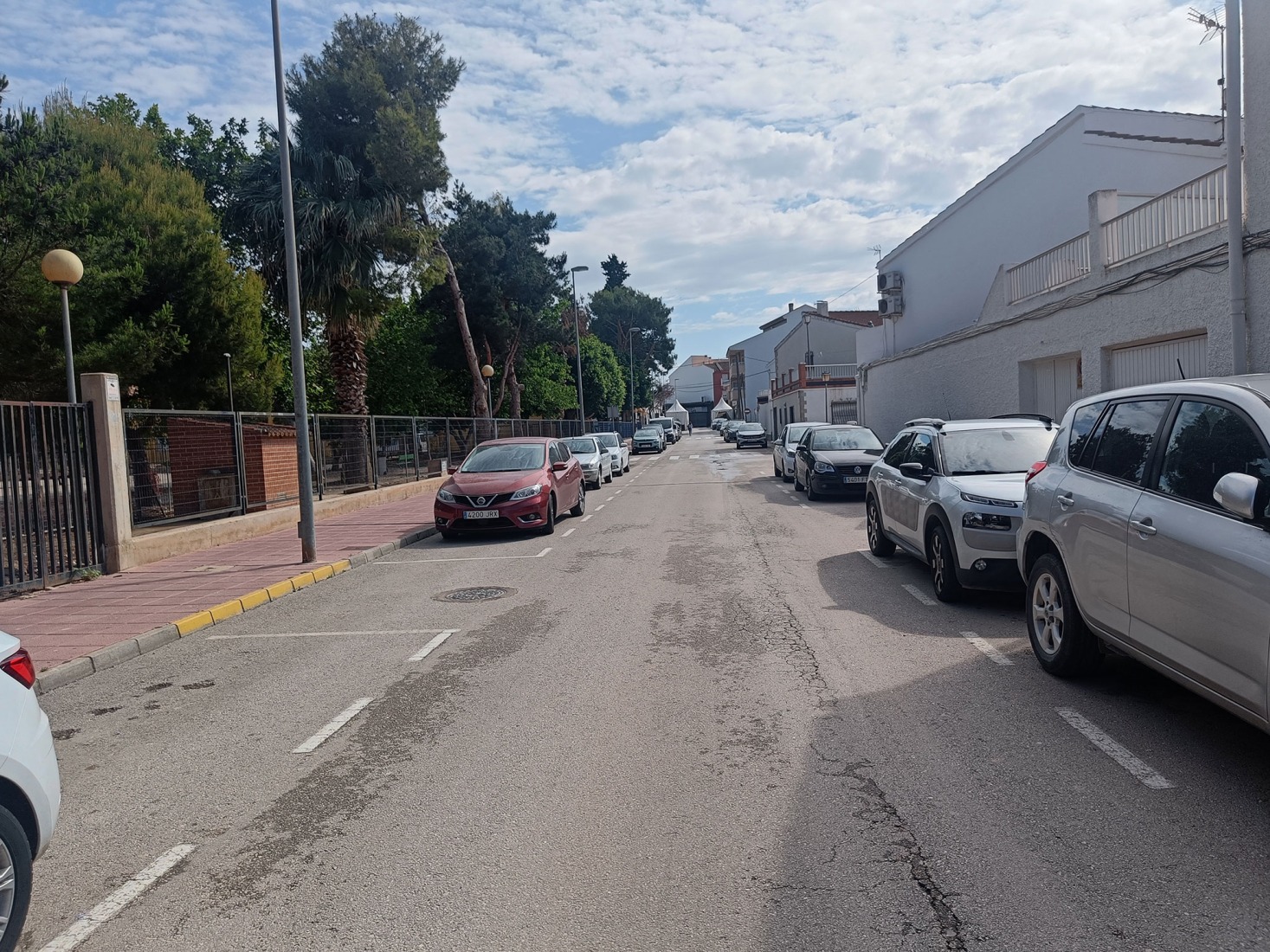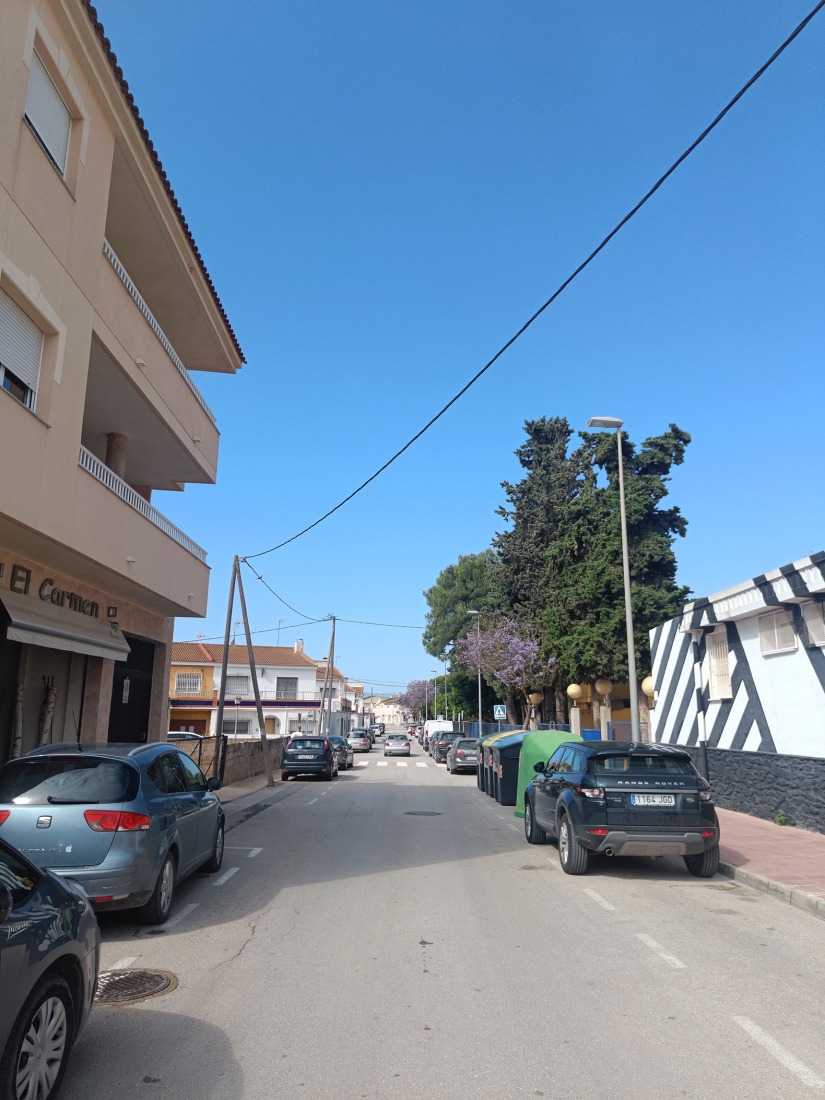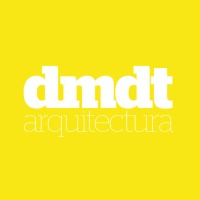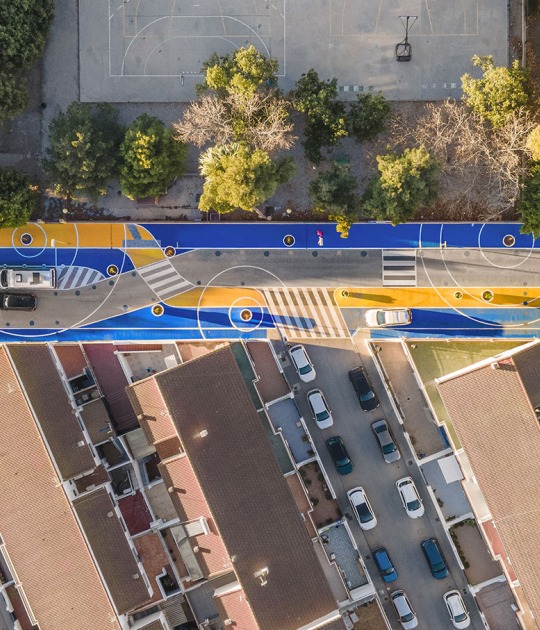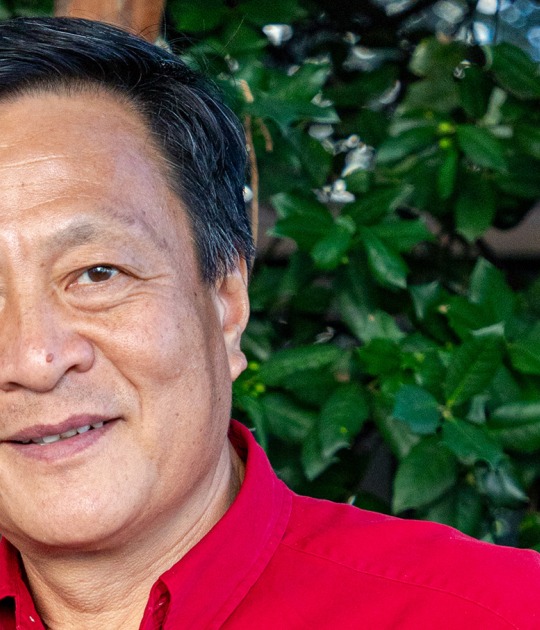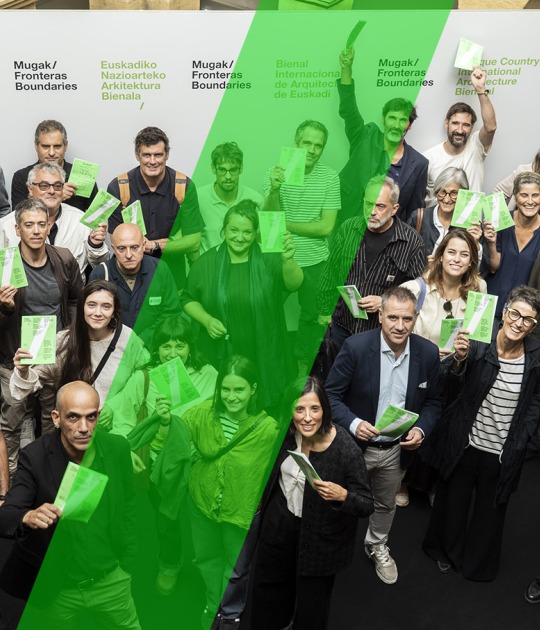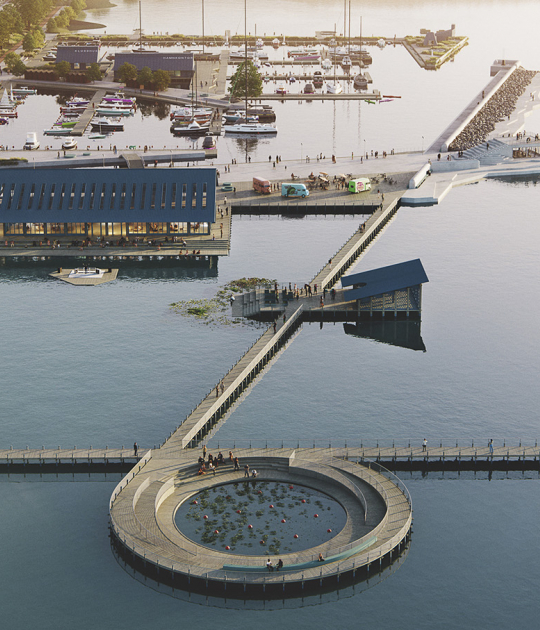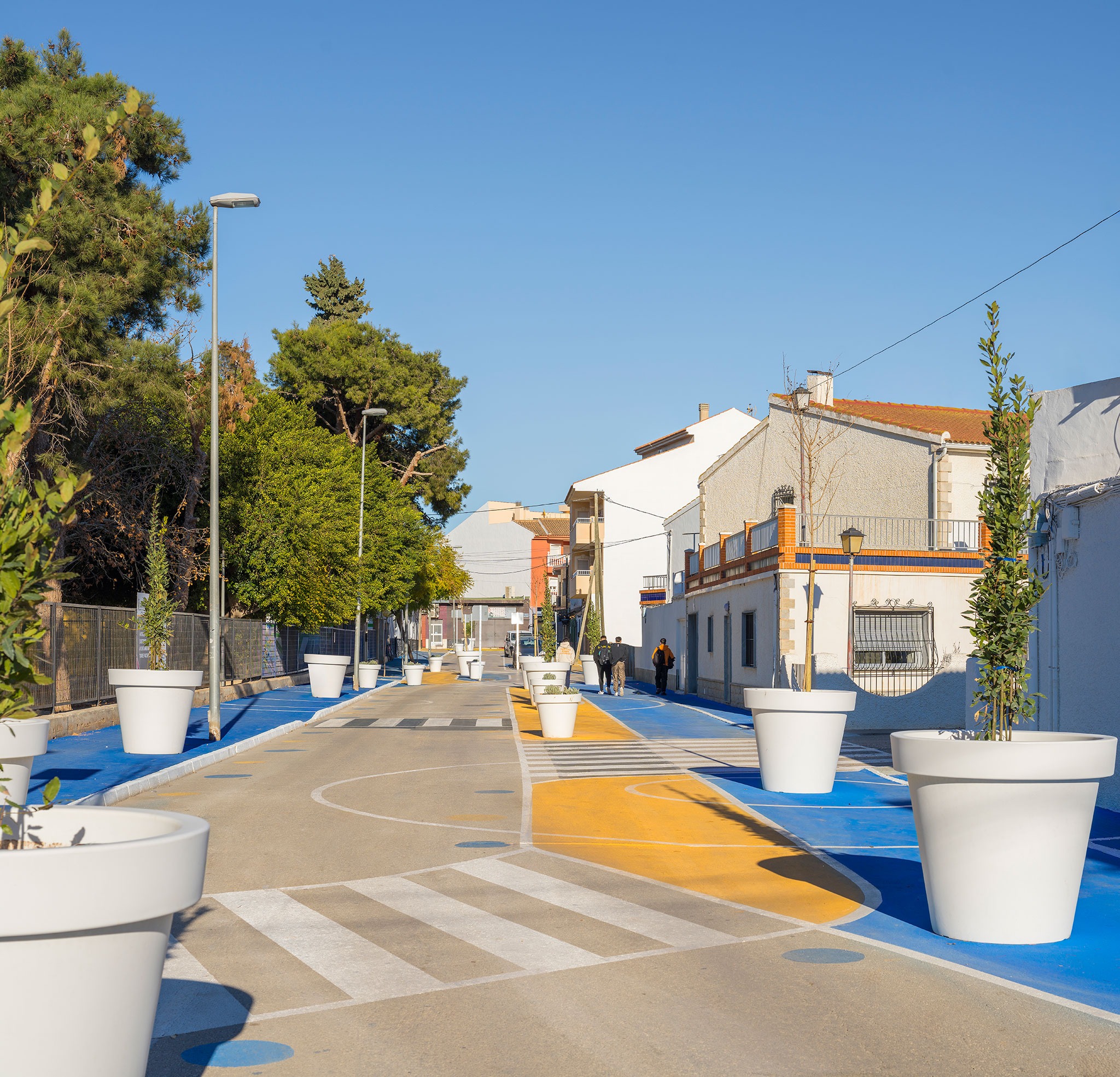
The project by DMDT and Parra Arquitectos transforms a busy street, which connects key municipal facilities such as the Luis Manzanares Secondary School and the Official Language School, into a space for coexistence, recreation, and social gathering.
The formal structure of the street is transformed through street markings, interspersed pedestrian paths, and a system of street furniture that, as the architects comment, "alters the logic of linear movement." The objective is to slow traffic through complex geometries and interwoven paths, which facilitate a dialogue between vehicles and pedestrians in the equitable use of urban space.
The restructuring uses new street furniture with a local identity (large-scale planters, inspired by traditional clay pots) and native, resilient vegetation with low water consumption, creating an urban landscape that generates identity.
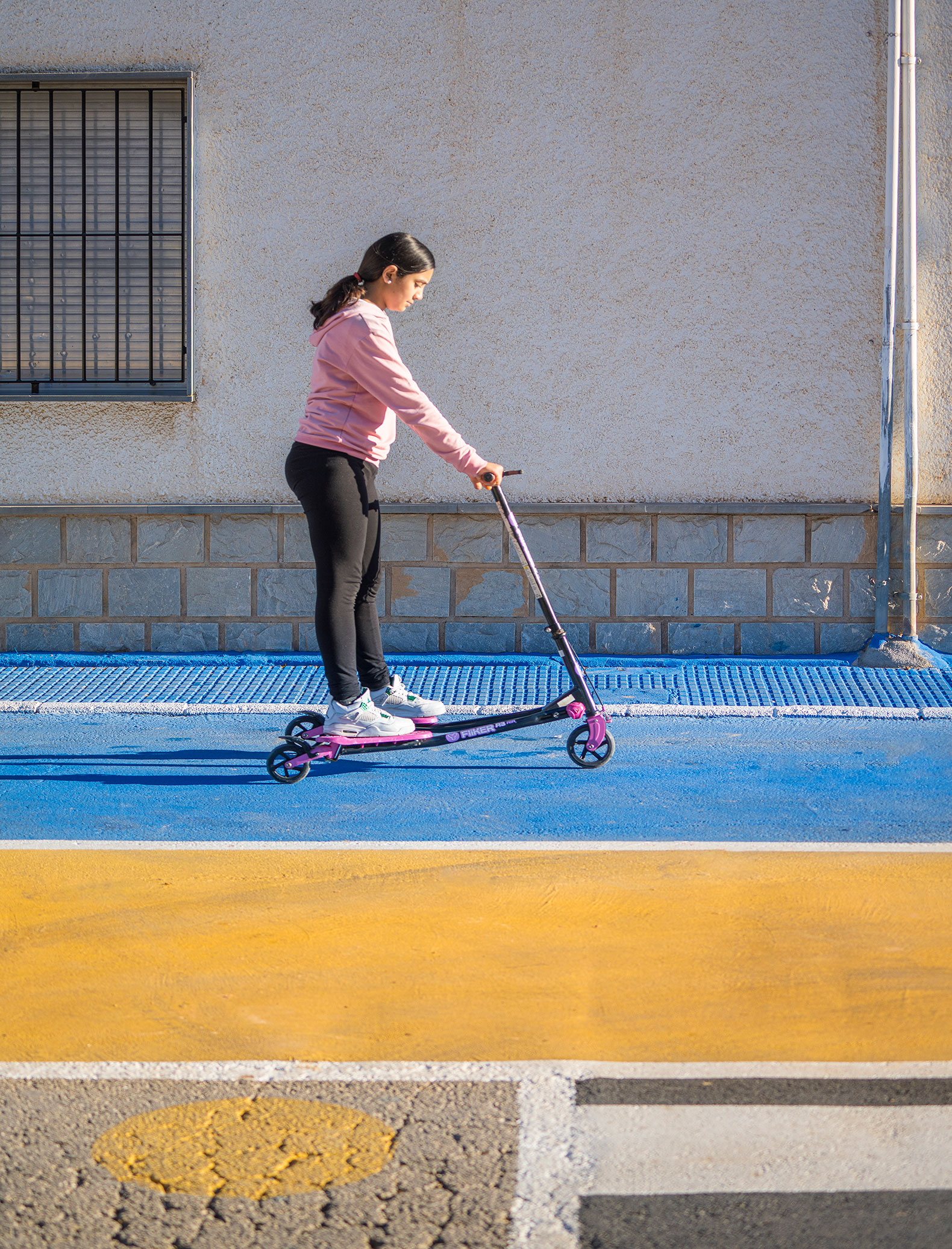
"Trenza urbana" by DMDT and Parra arquitectos. Photograph by Imagen Subliminal.
Project description by DMDT and Parra Arquitectos.
"Trenza urbana": Reorder, slow down, reconquer
A minimal intervention with maximum impact on public space
• Low-investment intervention with high urban and social impact.
• Traffic reorganization through braided routes and street furniture.
• Design based on local elements and native vegetation to generate identity.
"Trenza urbana" is an urban intervention developed in Torre Pacheco (Murcia), whose main objective is to transform a high-traffic street into a pedestrian-friendly space. The project is located on Miguel de Cervantes Street, a road that connects key educational facilities in the municipality and which presented a functional imbalance between vehicles and people.
The intervention takes on the role of an urban testing ground for both the administration and the technicians and users. The street becomes a real laboratory on a 1:1 scale, where tactical strategies, low-cost solutions, and shared management models for public space are tested. This experimentation is not based on formal gestures, but rather on the possibility of evaluating their social impact, their adaptability, and their replicability in other areas of the municipality.

The approach is based on a technical and restrained logic: working with the minimum necessary to achieve the greatest possible effect. The original layout is reorganized through street markings, interspersed pedestrian paths, and a furniture system that alters the logic of linear movement. The urban strategy is based on slowing traffic through more complex geometries, forcing vehicles and pedestrians to share the space more equitably.
The incorporation of large-scale planters, inspired by traditional clay pots from the southeast of the Iberian Peninsula, serves a dual function: regulating traffic and generating identity. Placed at key points, these elements act as filters that guide routes and create areas for shade, relaxation, and meeting.
The selected vegetation is native and resilient, with low water consumption, aligning with sustainability and low-maintenance criteria. The combination of local species and recognizable materials transforms the street into a renewed urban landscape that reclaims its local value.
The project enhances the everyday through a tactical, simple, and replicable intervention. Instead of major urban transformations, it proposes a method: to intervene with precision, using geometry as a common language between the existing and the planned
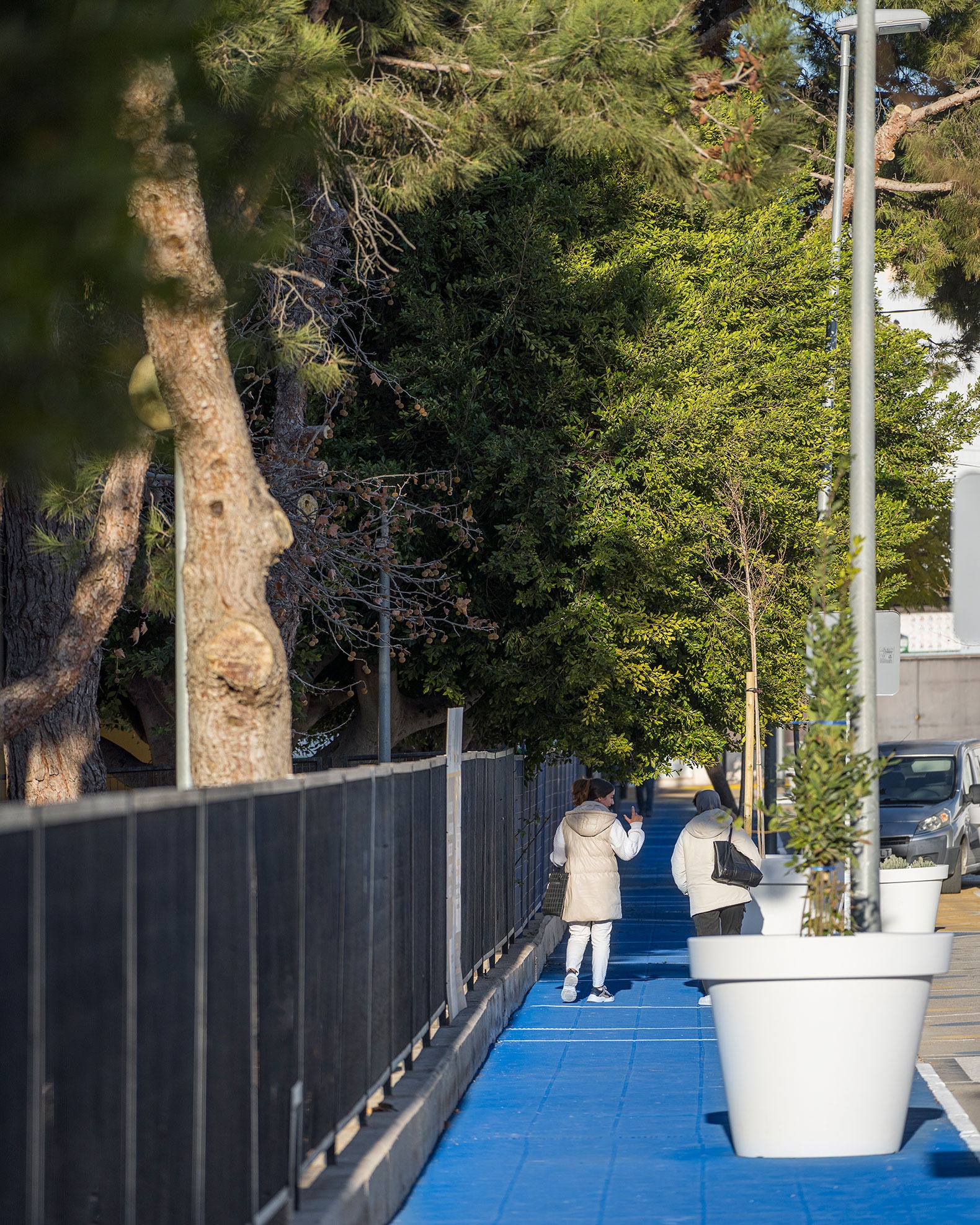
The project does not seek to impose a new form of city, but rather to open a conversation with the environment. A light, useful, and symbolic infrastructure invites us to slow down, occupy the space, and consider how we want to experience our streets.
In short, a proposal that unfolds between technology, local culture, and urban listening.
A street as a testing ground
Miguel de Cervantes Street, with its straight layout and predominantly vehicular traffic, connects key municipal amenities such as the Luis Manzanares Secondary School and the Official Language School. Faced with the imbalance between vehicle traffic and pedestrian use, the City Council proposes this intervention as an urban experiment to test another way of inhabiting the common space.
The strategy is clear: reorganize vehicle and pedestrian flows to reduce traffic speed and create space for walking, waiting, and meeting. Linear geometry becomes a braid of movement. Pedestrian paths intertwine with vehicular paths, transforming how and where people move, cross, and linger.
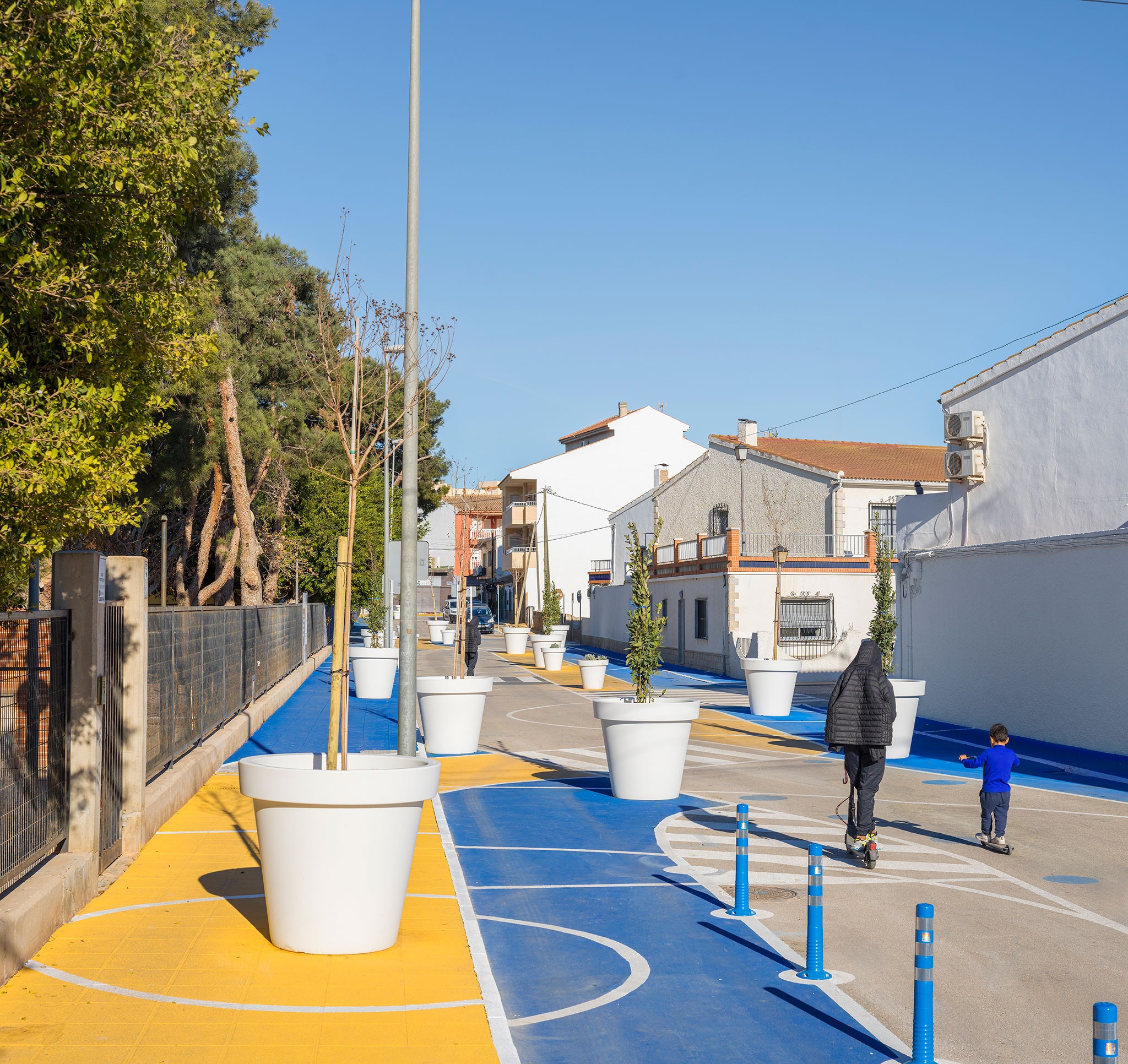
Concrete actions, visible results
The project is based on subtle but firm gestures:
• Redistribution of the road section.
• Markings on the ground that reorganize circulation.
• Large-scale planters, a contemporary reinterpretation of local ceramics, used as urban furniture and flow control elements.
• Native, low-maintenance vegetation to promote renaturalization.
The street is no longer traversed in a linear fashion: now, people walk, stop, and observe.
